Henry VII & the Glorious Wool Churches of the Cotswolds
A Brief Introduction to Cotswold Wool Churches
Known for its rolling hills and charming villages, the Cotswolds is home to some incredible historic churches. An area made rich by its wool trade in medieval times, wool merchants often funded the construction and renovation of churches in their communities to display their wealth and status. The churches became known as “wool churches.” These churches still stand as proud reminders of the Cotswolds’ rich history and architectural heritage.
These churches also had close links to the Crown, often supplementing the royal coffers and funding royal initiatives. They were undoubtedly a vital source of funding for Henry VII, who visited the Cotswolds on a handful of occasions, schmoozing the local wool merchants to forge deeper relationships and ensure a healthy cash flow when needed.
Today, we visit two of the most prominent of these wool churches: St. John the Baptist in Cirencester and St Mary’s Church in Fairford. I’m joined by Dr Samantha Harper, who specialises in late medieval political British history, specialising in lay religion pre and post-Reformation. She was recently employed on the ‘Tudor Chamber Books’ project, which transcribed and published books of the monarchy’s receipts from 1487 to 1521.
St John the Baptist Church, Cirencester
St. John the Baptist was built in the twelfth century and has since been expanded and renovated. Its tower is over 140 feet tall and one of the tallest in the Cotswolds region. Home to a fan-vaulted ceiling, intricate carvings, beautiful stained glass windows, and a series of medieval tombs and effigies – including the tomb of John Twynyho, a wealthy wool merchant who died in 1388, St John the Baptist is an important landmark and a testament to the town’s rich history as a centre for the wool trade.
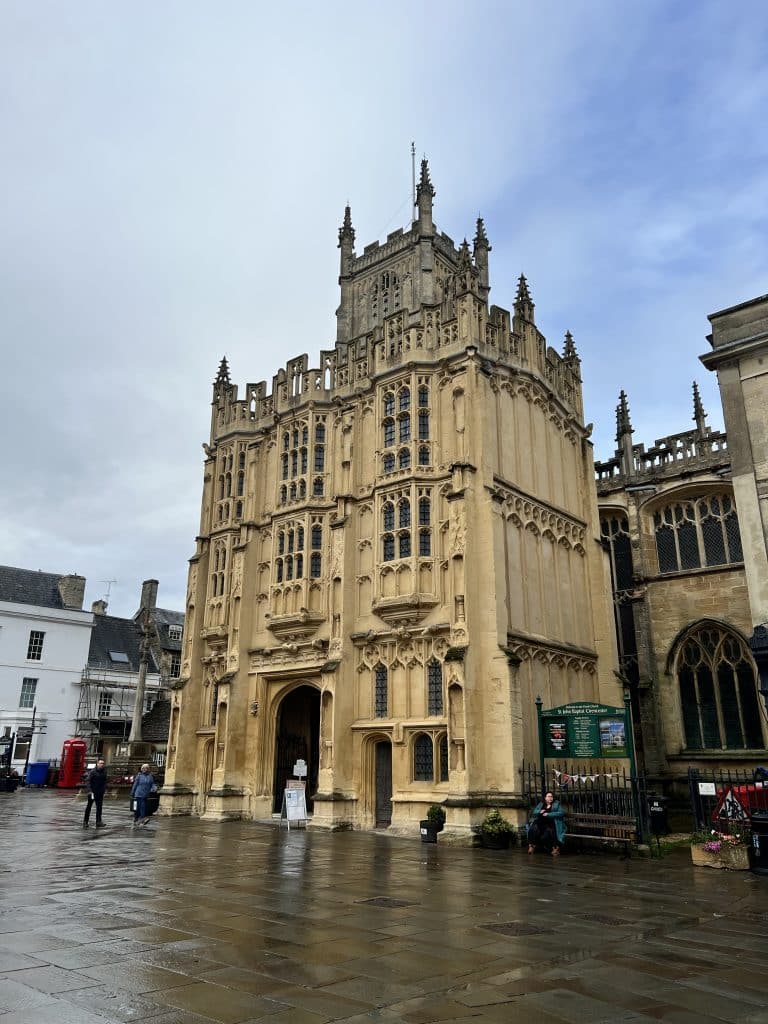
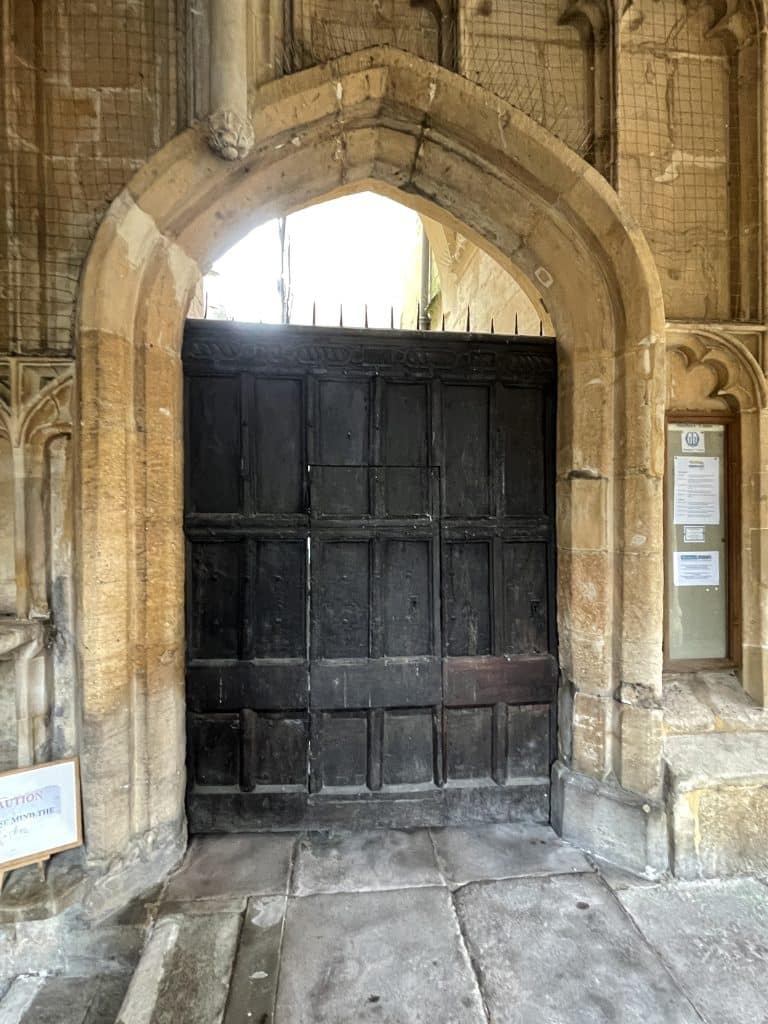
The entrance to St John the Baptist Church, Cirencester
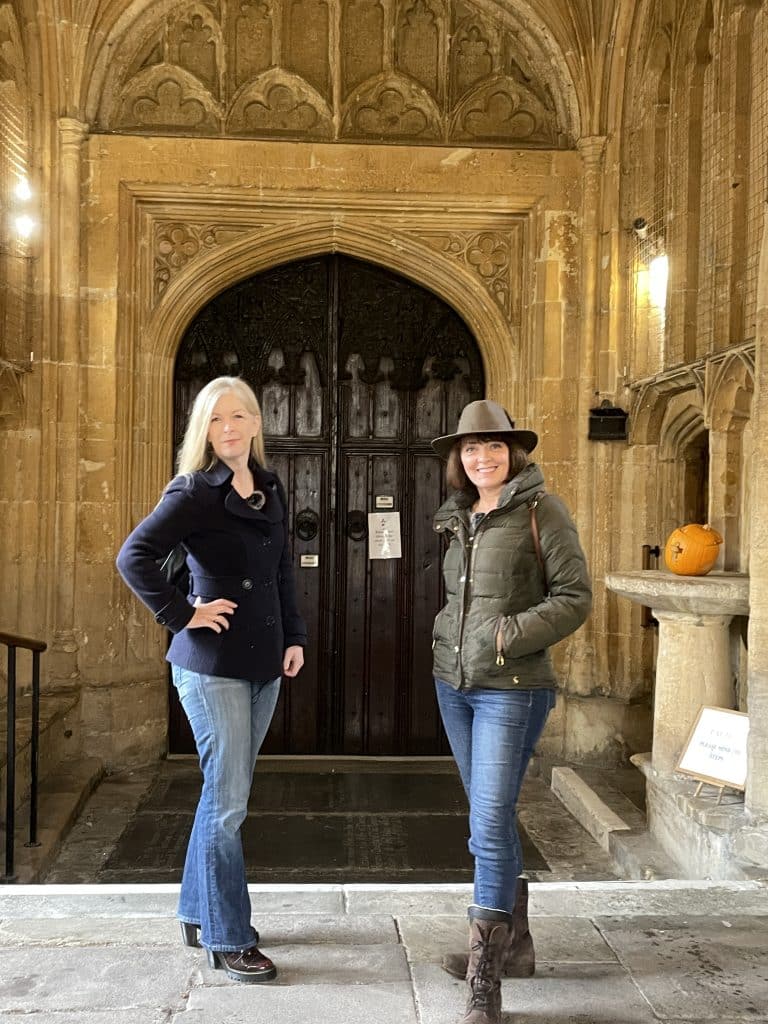
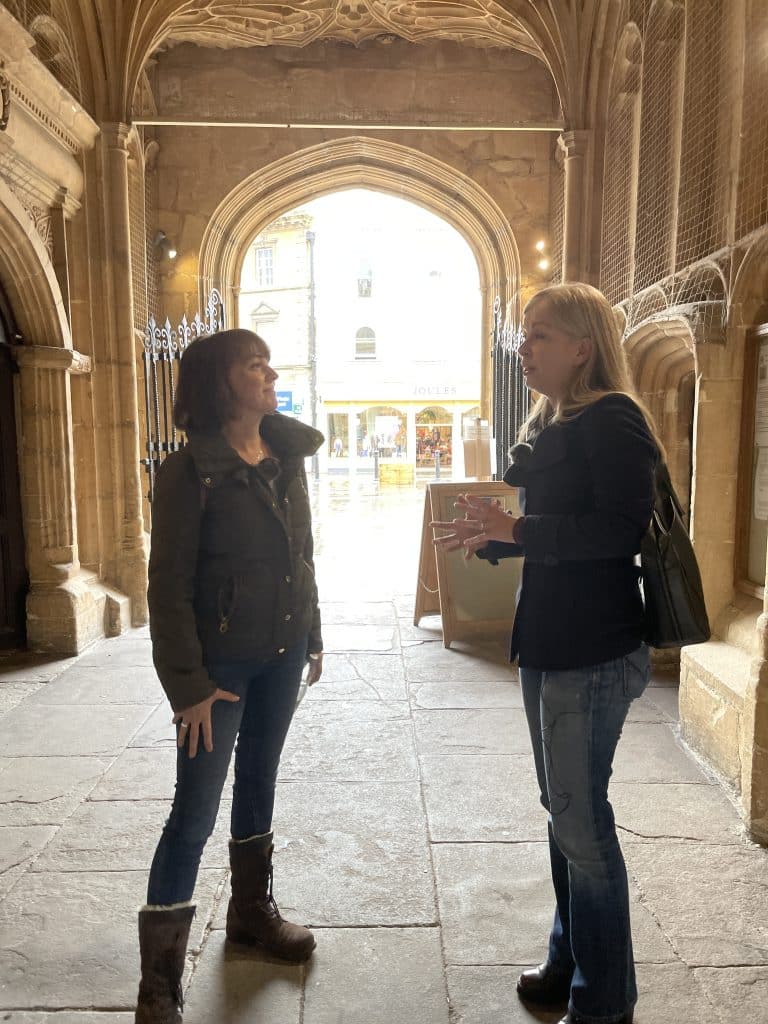
Sarah and Sam inside the porch of St John The Baptist Church, Cirencester
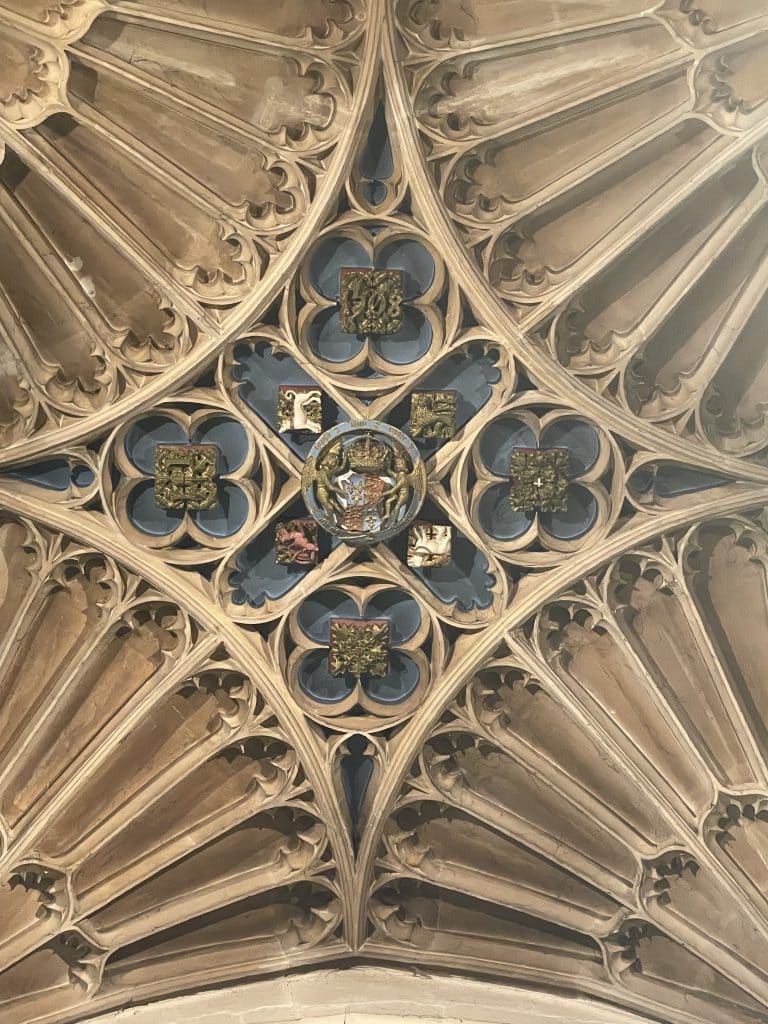
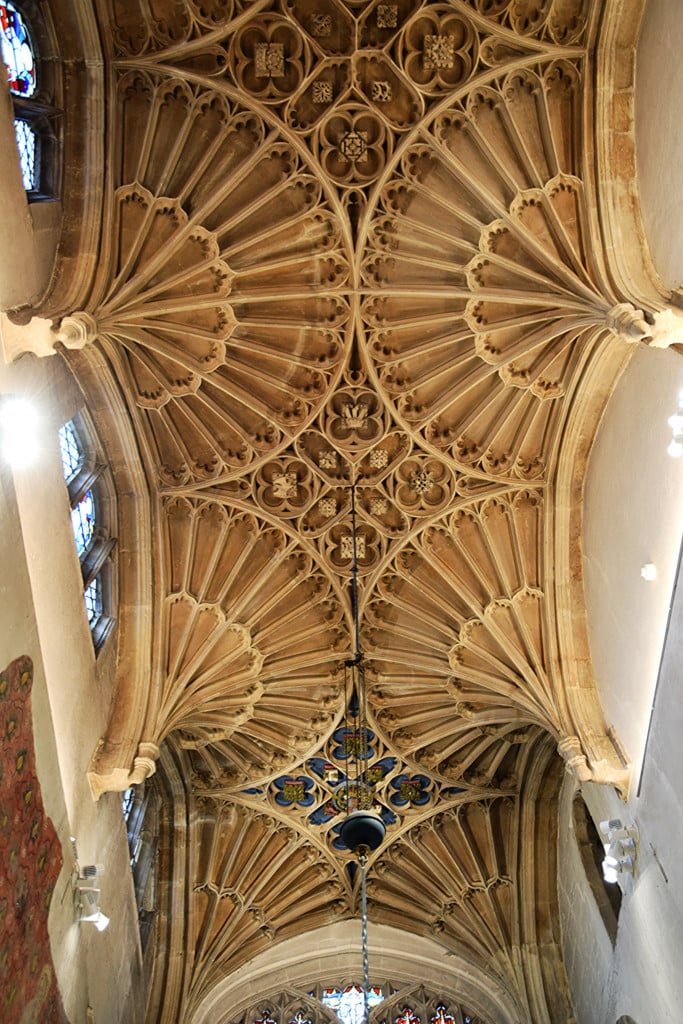
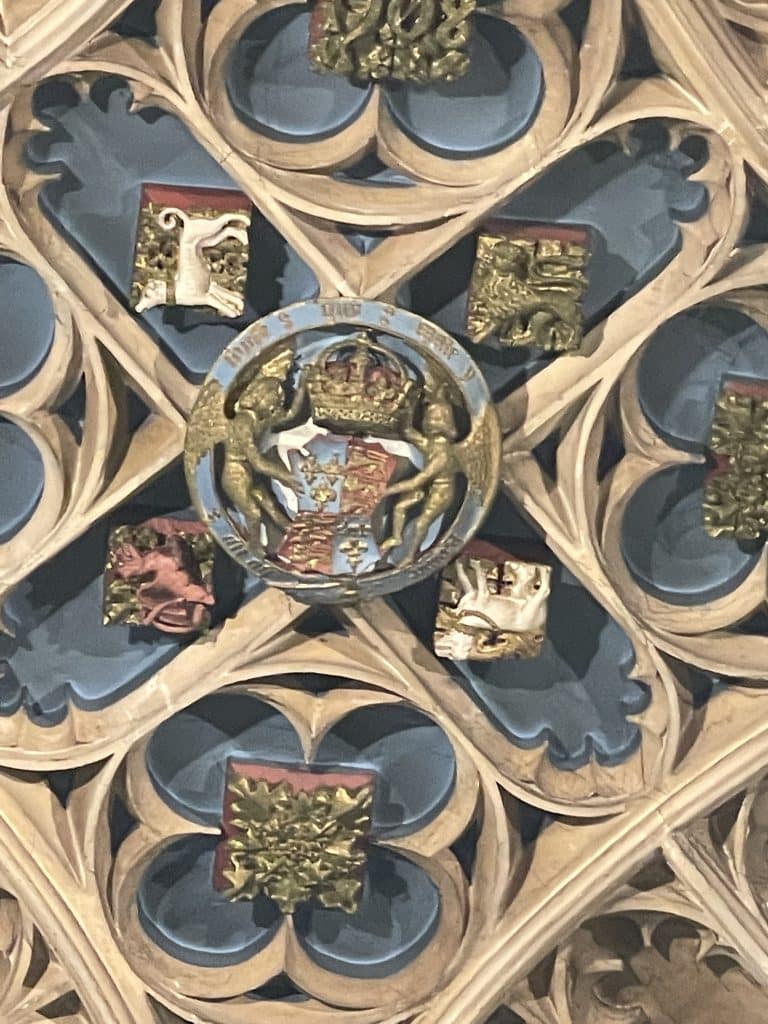
The arms of Henry VII (lion, greyhound and dragon) and the fan vaulted ceiling (image licensed under the Creative Commons Attribution-Share Alike 2.0 Generic license).
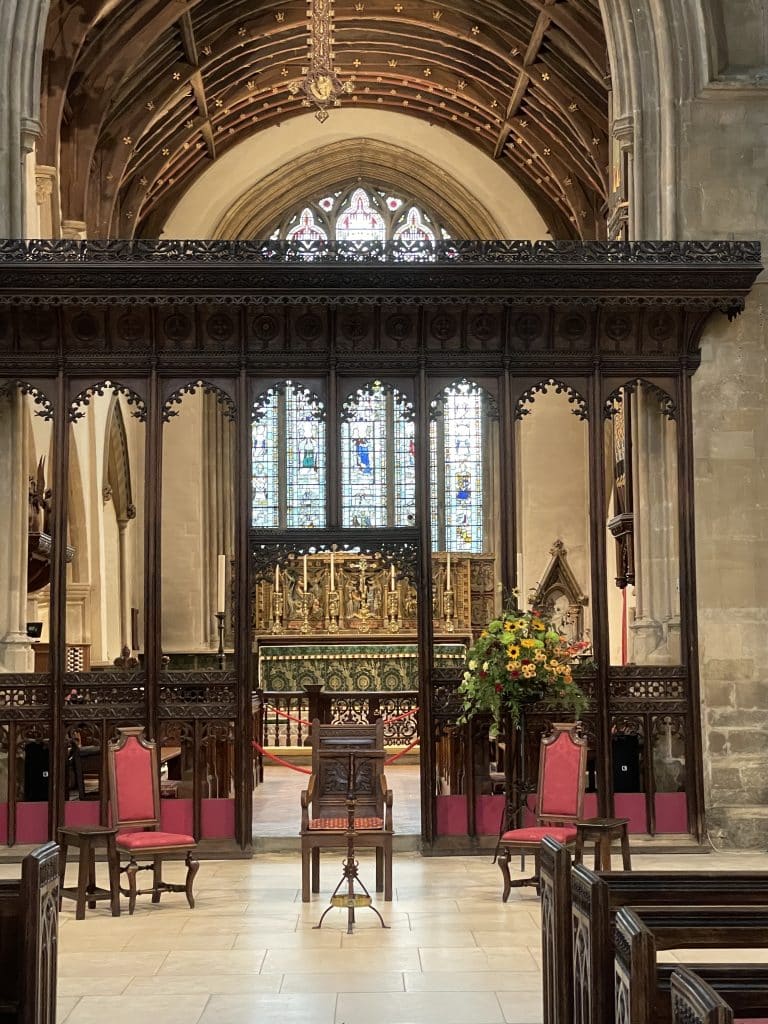
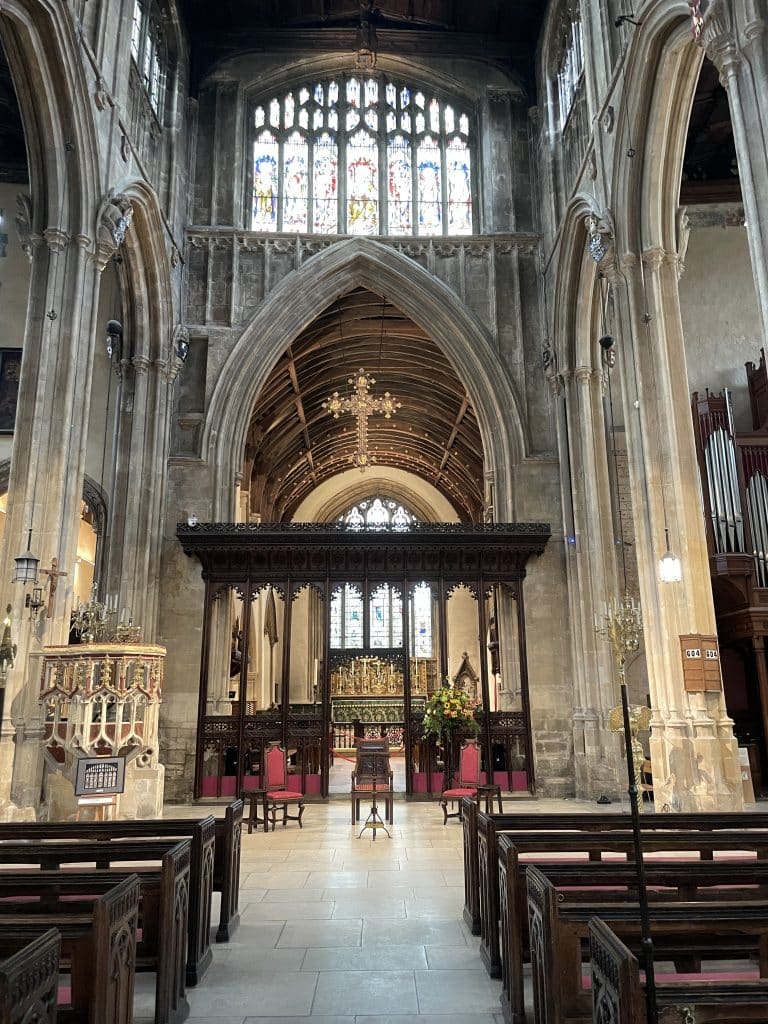
The nave
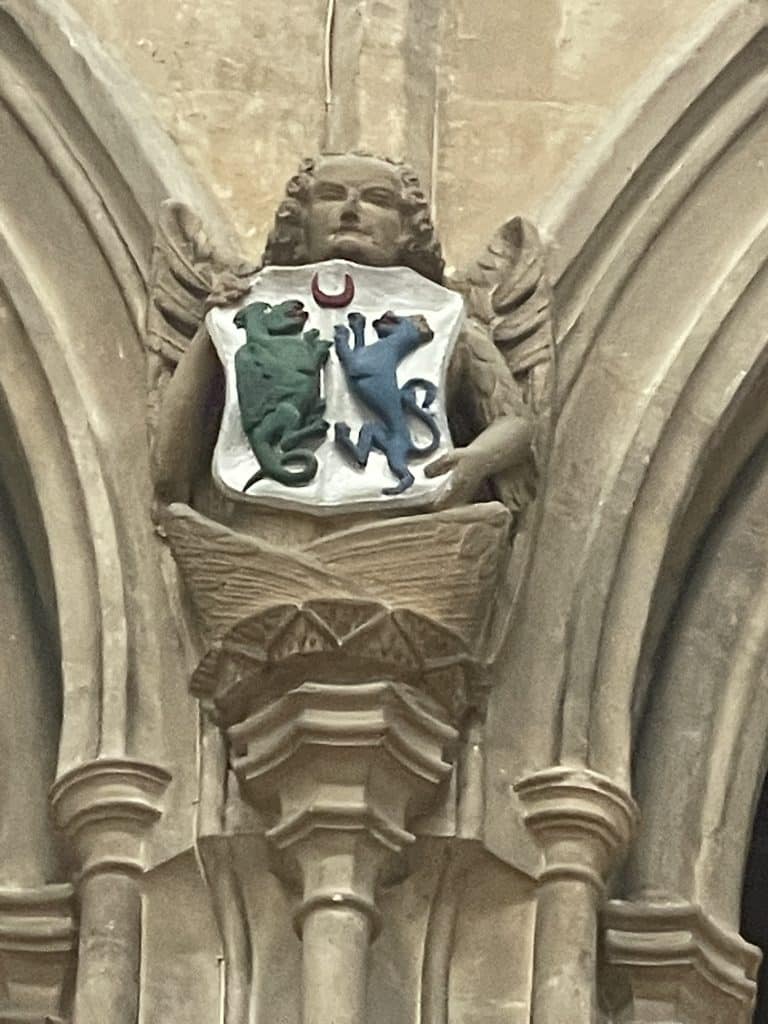
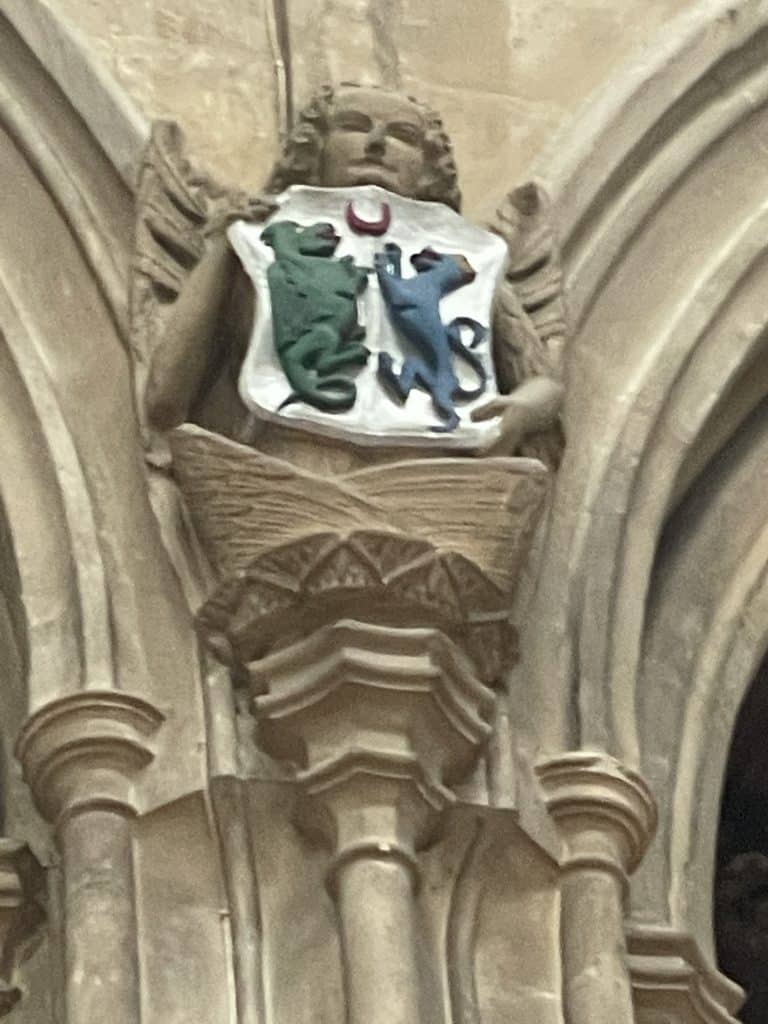
The Wool Merchant’s often displayed their coats of arms in the nave of the churches they patronised.
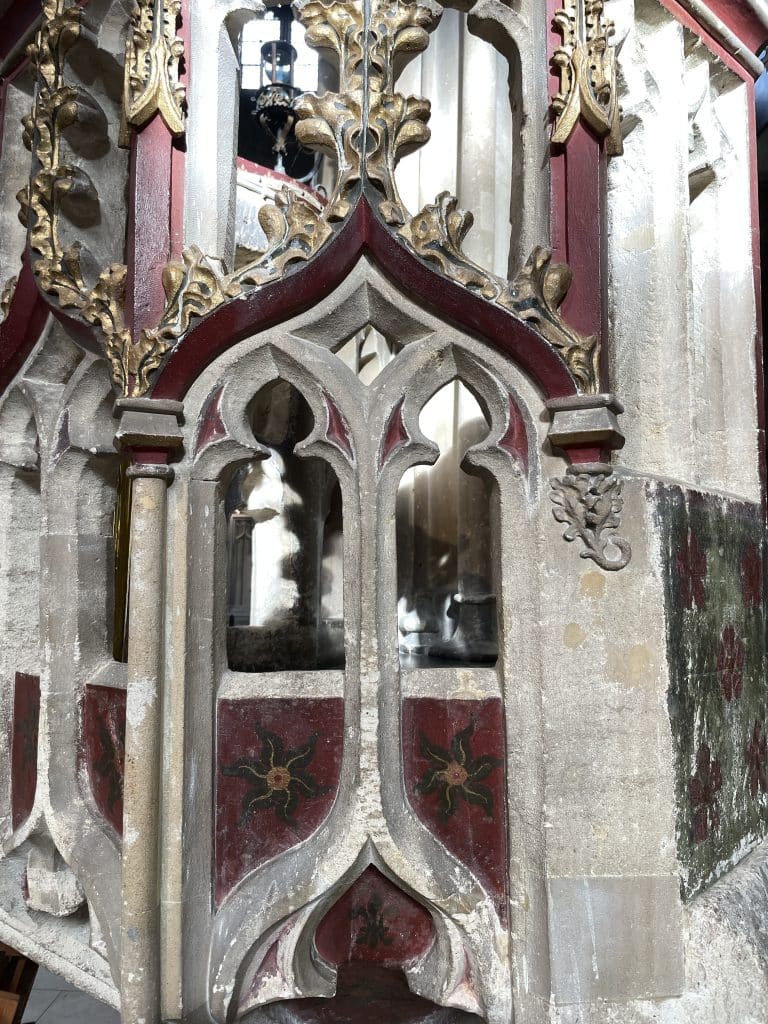

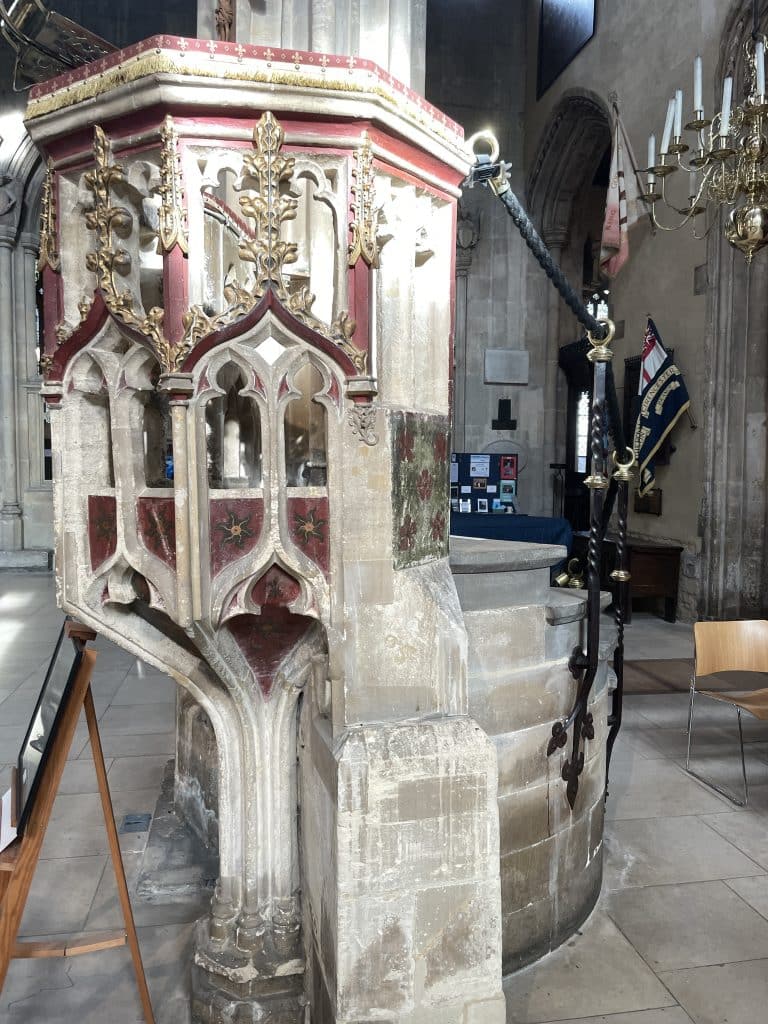
The pulpit
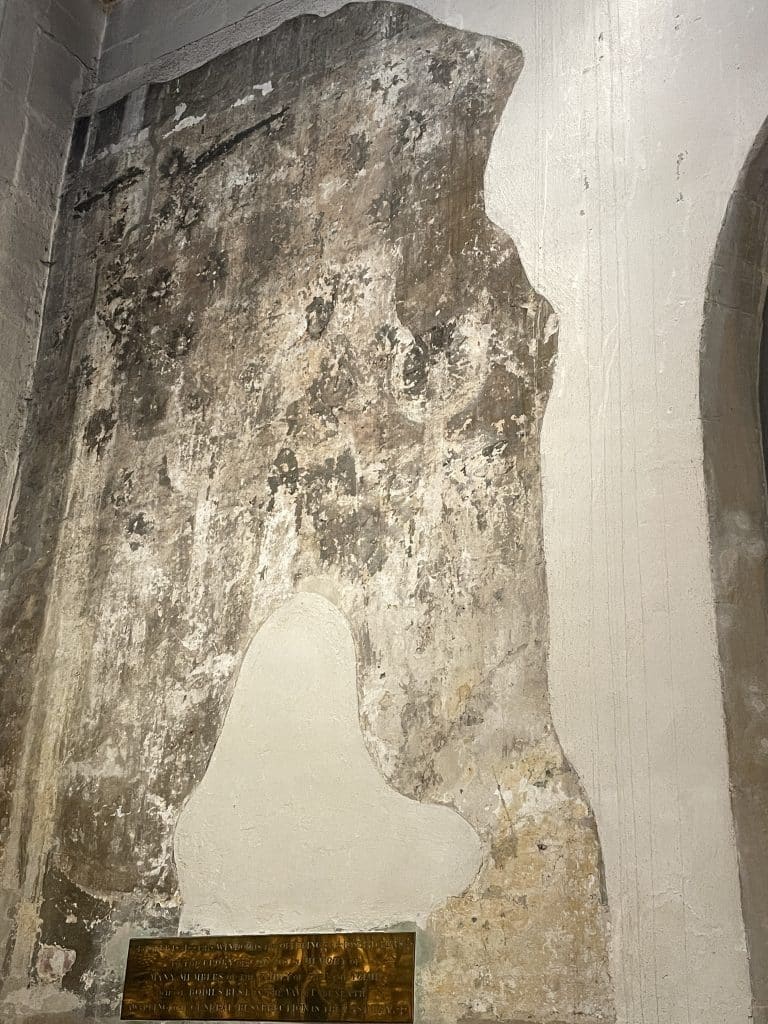
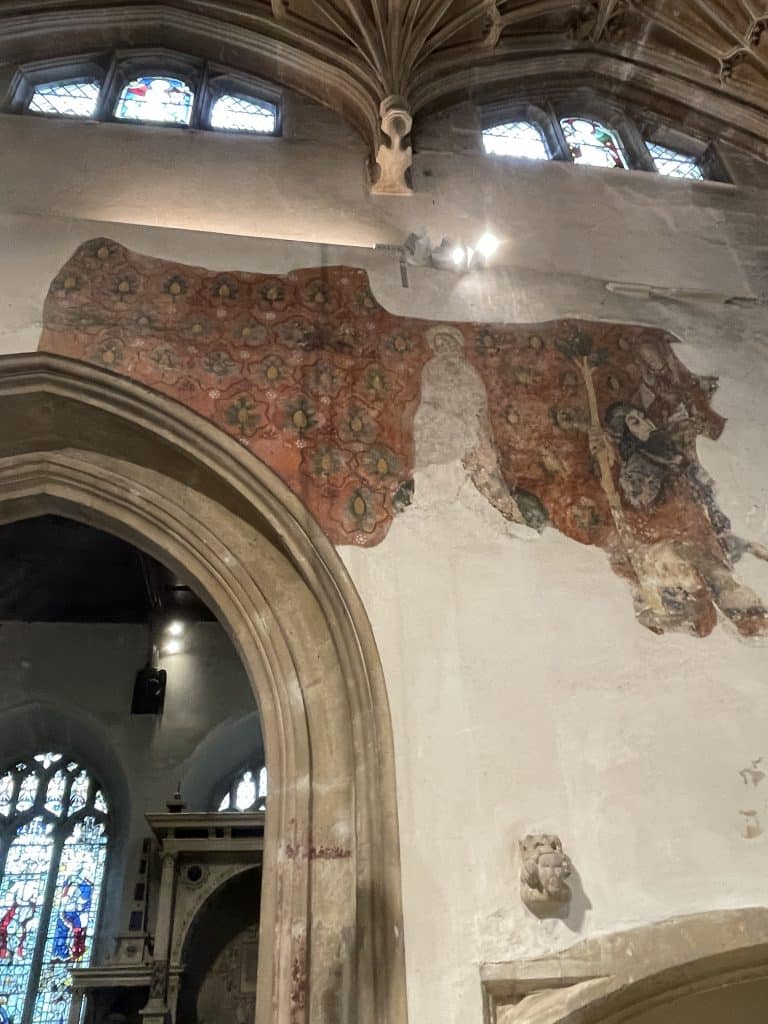
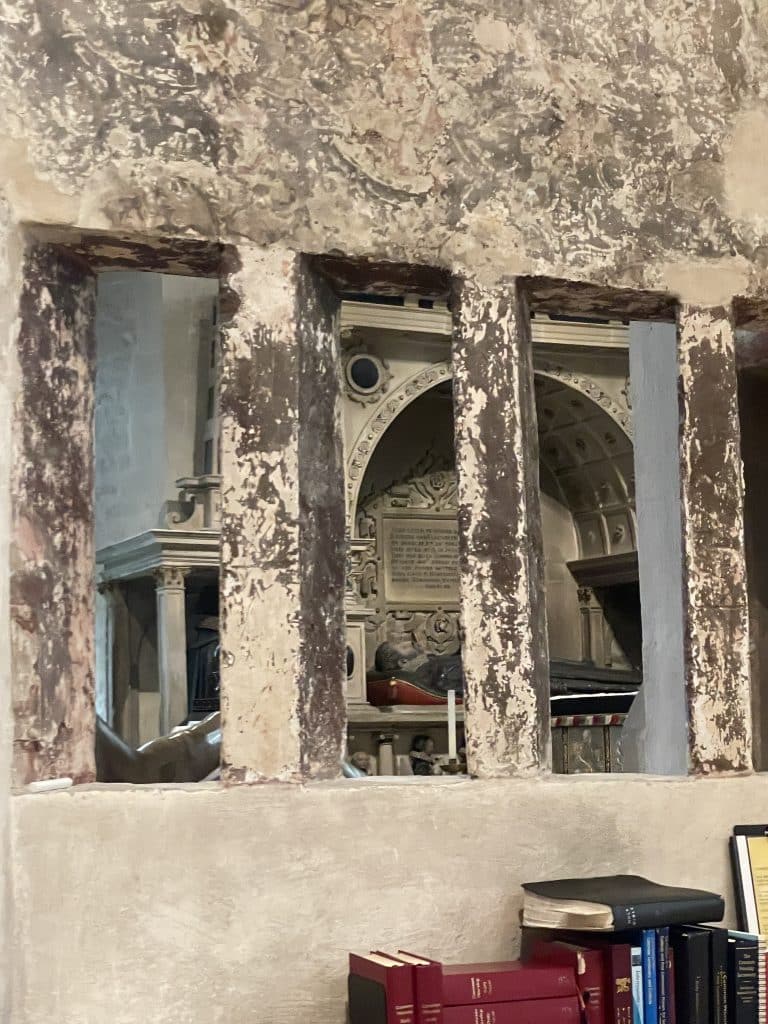
Remnants of red medieval wall painting
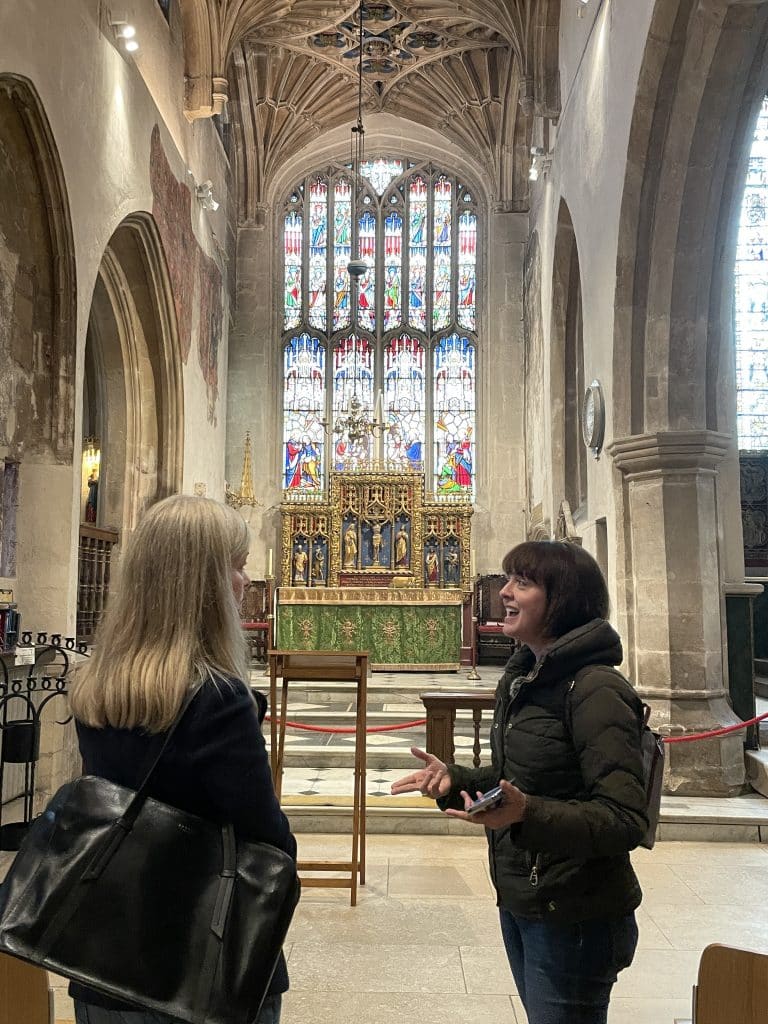
Sarah and Sam in inside St Catherine’s Chapel
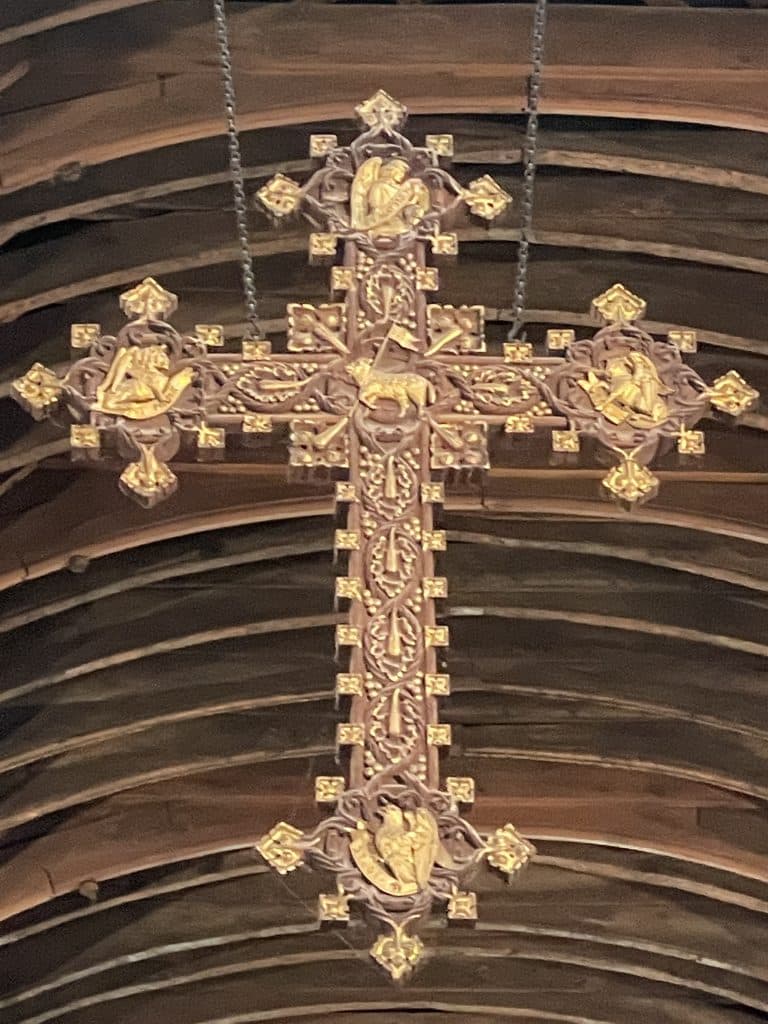

Illuminated cross and wooden ceiling
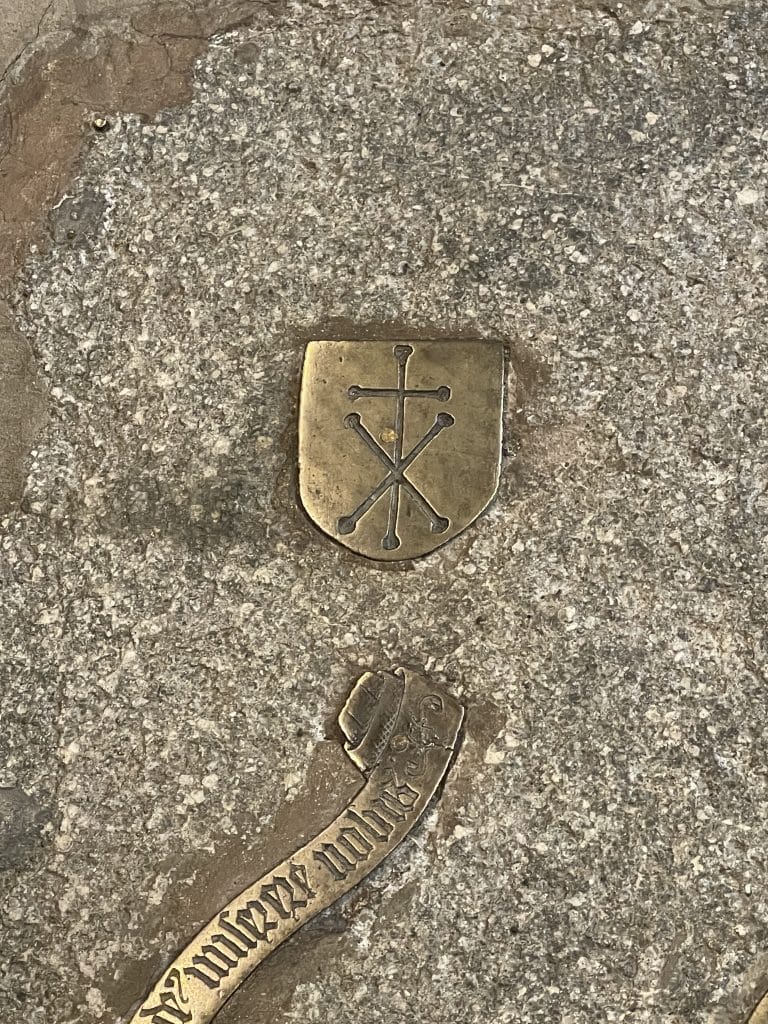
A wool merchants mark on his tomb ledger.
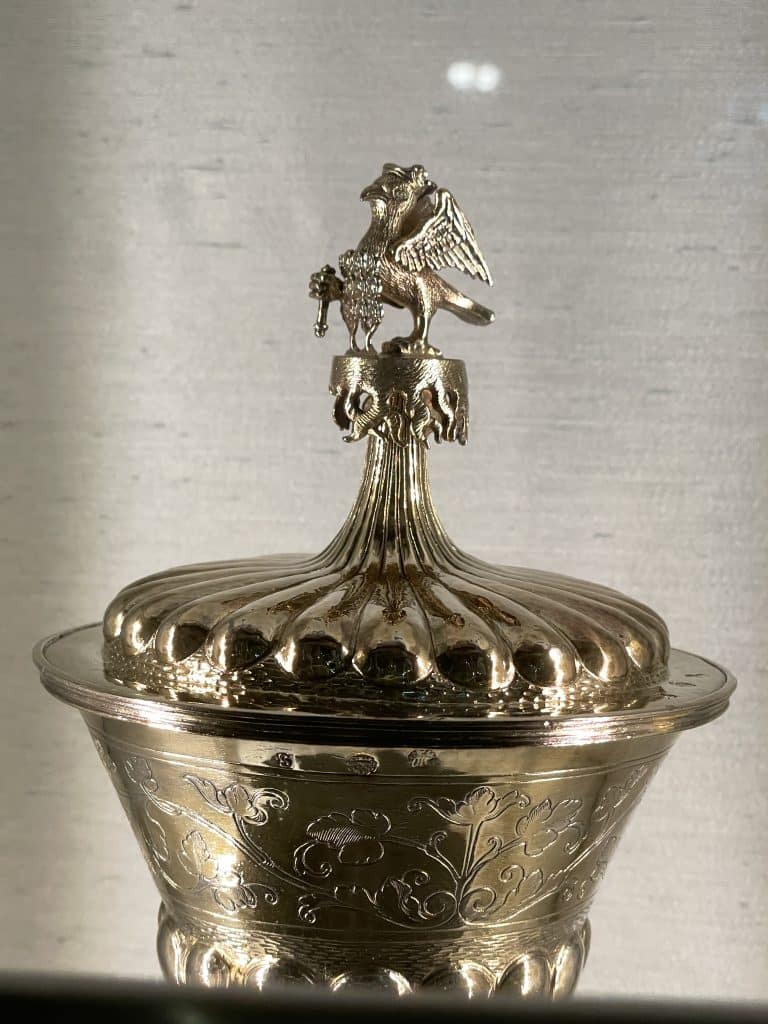
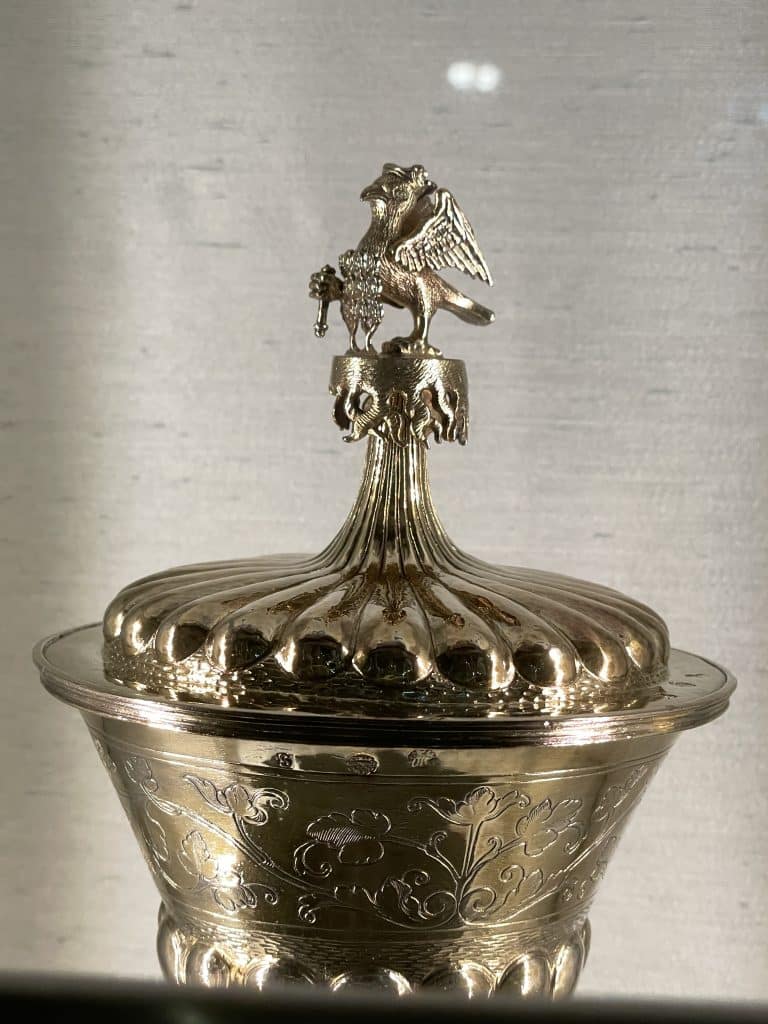
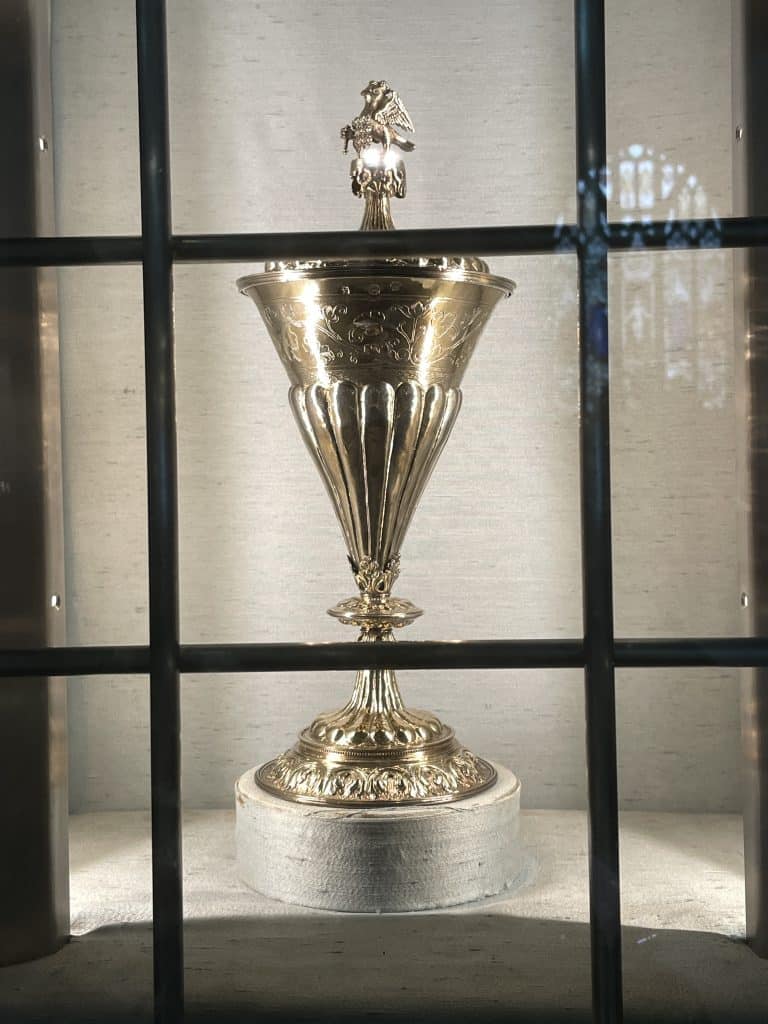
The Anne Boleyn Cup
St Mary’s Church, Fairford
A pretty, unassuming town, Fairford is home to St Mary’s church, which boasts the most complete set of Tudor stained glass in Britain, consisting of 28 windows displaying biblical scenes. The church was built in the fifteenth century with the support of the wealthy wool merchants who dominated the town at the time.
The church’s most striking feature is, of course, its stained glass windows, which were installed between 1500 and 1517. The windows were created by the renowned master glazier Barnard Flower and his workshop. During the English Civil War, the church was damaged by Parliamentary troops, who destroyed the west window and defaced many of the other windows. In the eighteenth century, the church was restored and the damaged windows were repaired. Today, St Mary’s Church is a Grade I listed building, with much of its Tudor craftsmanship intact.
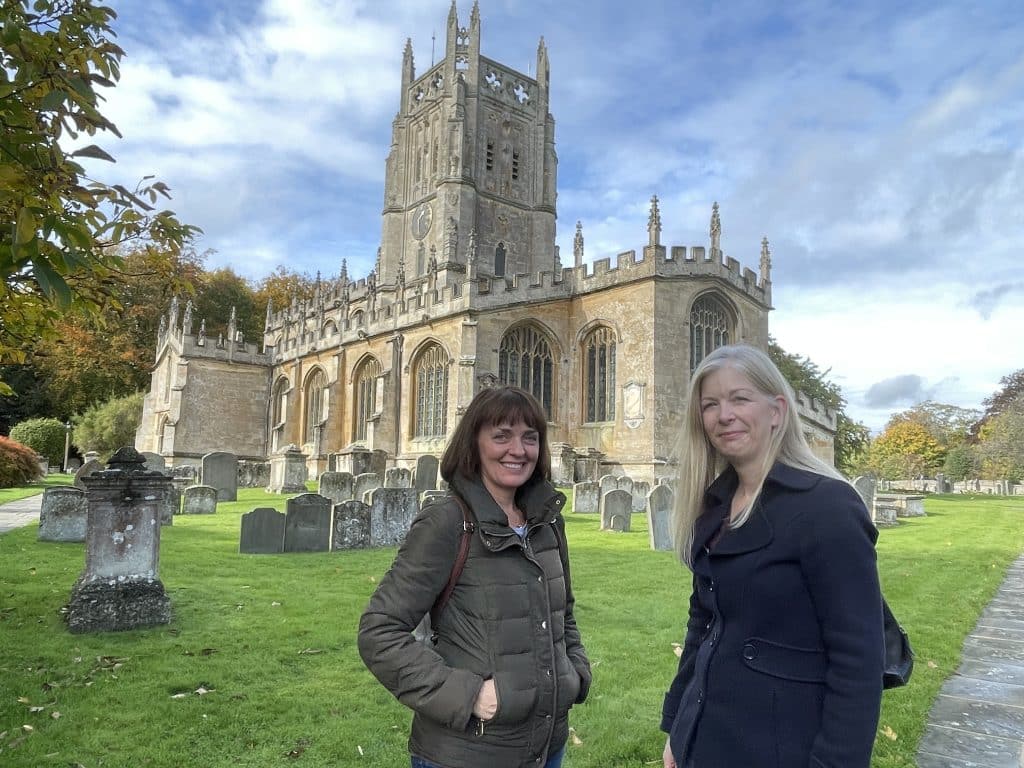
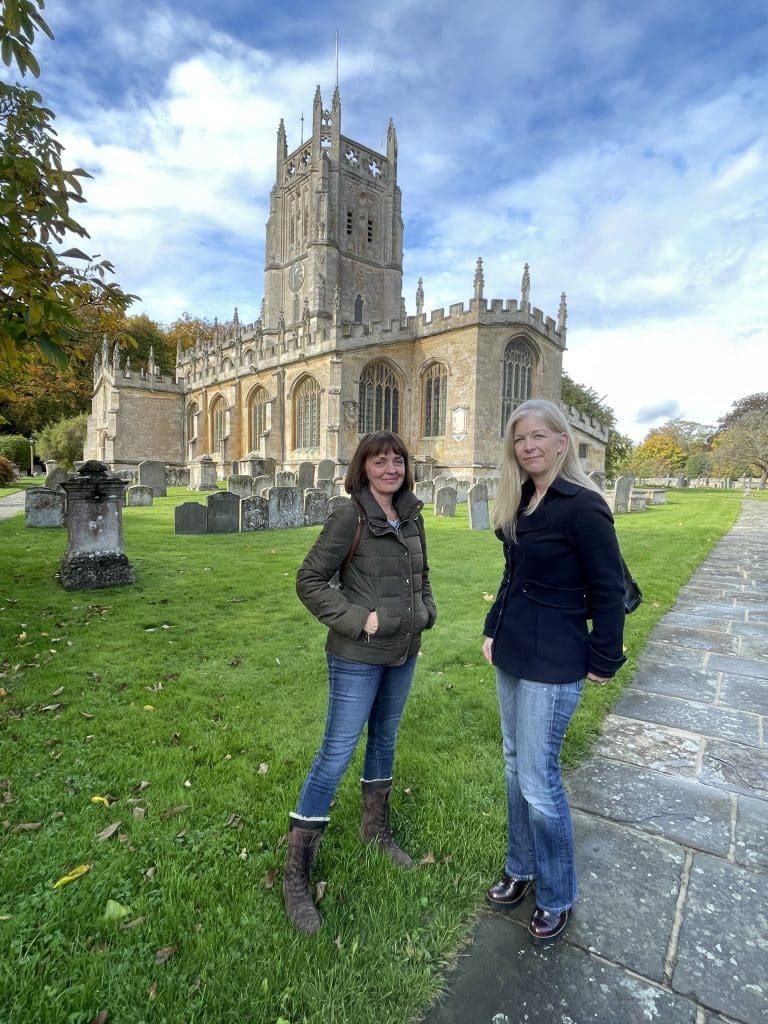
Sarah and Sam outside St Mary’s Church in Fairford
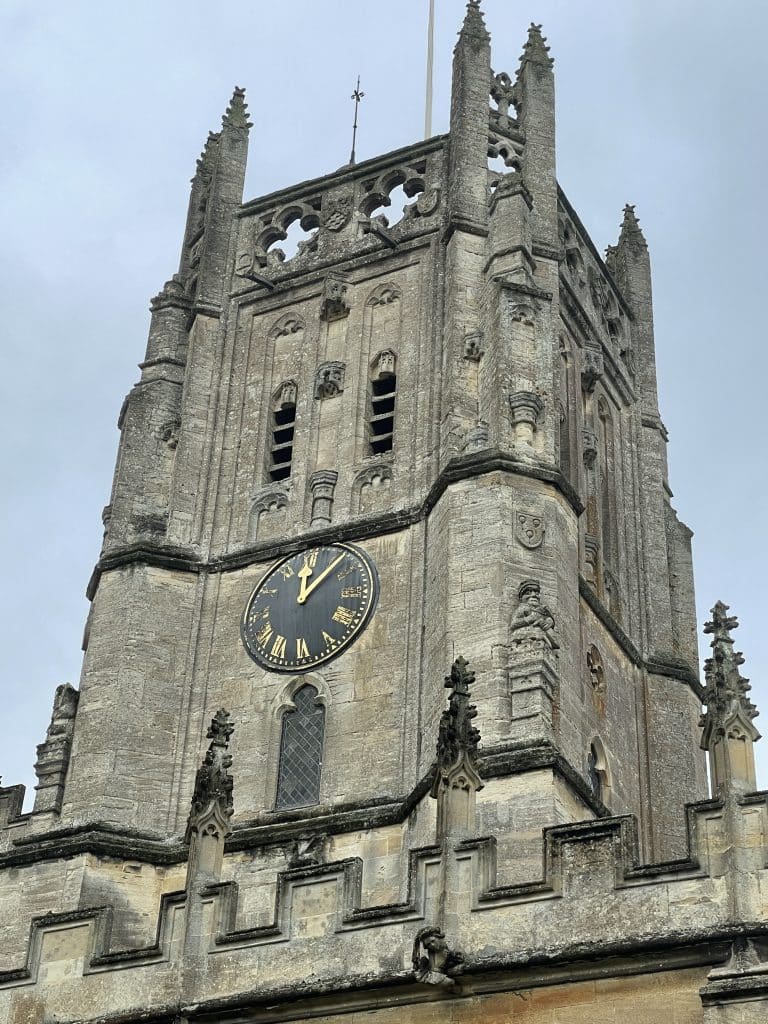
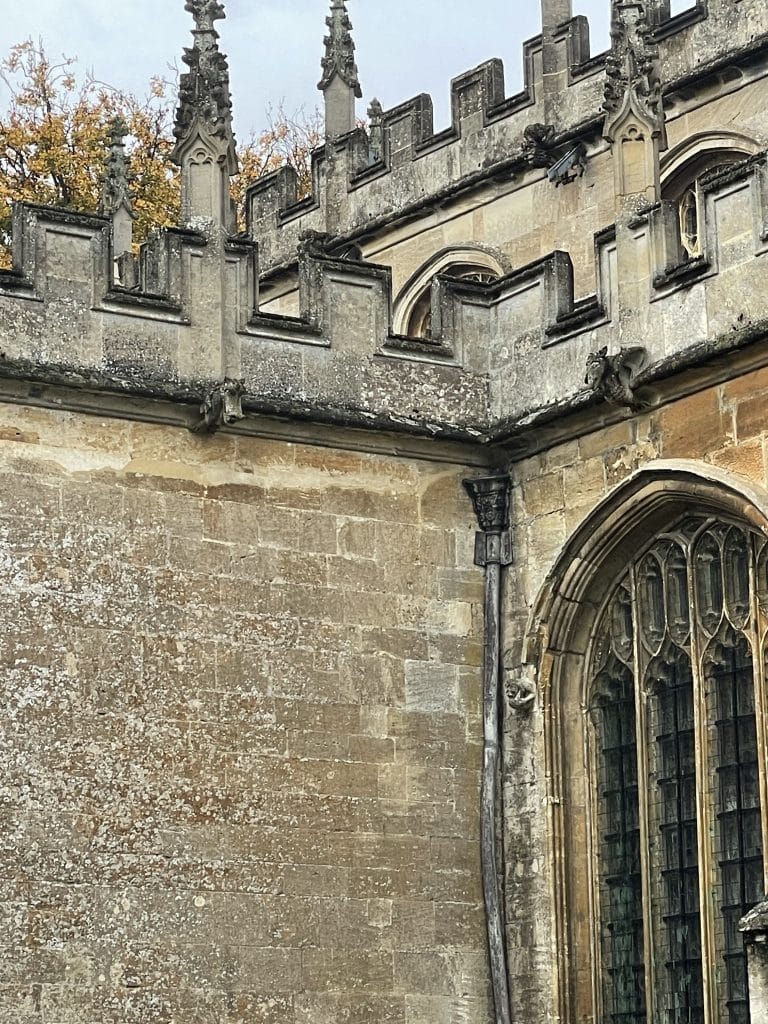
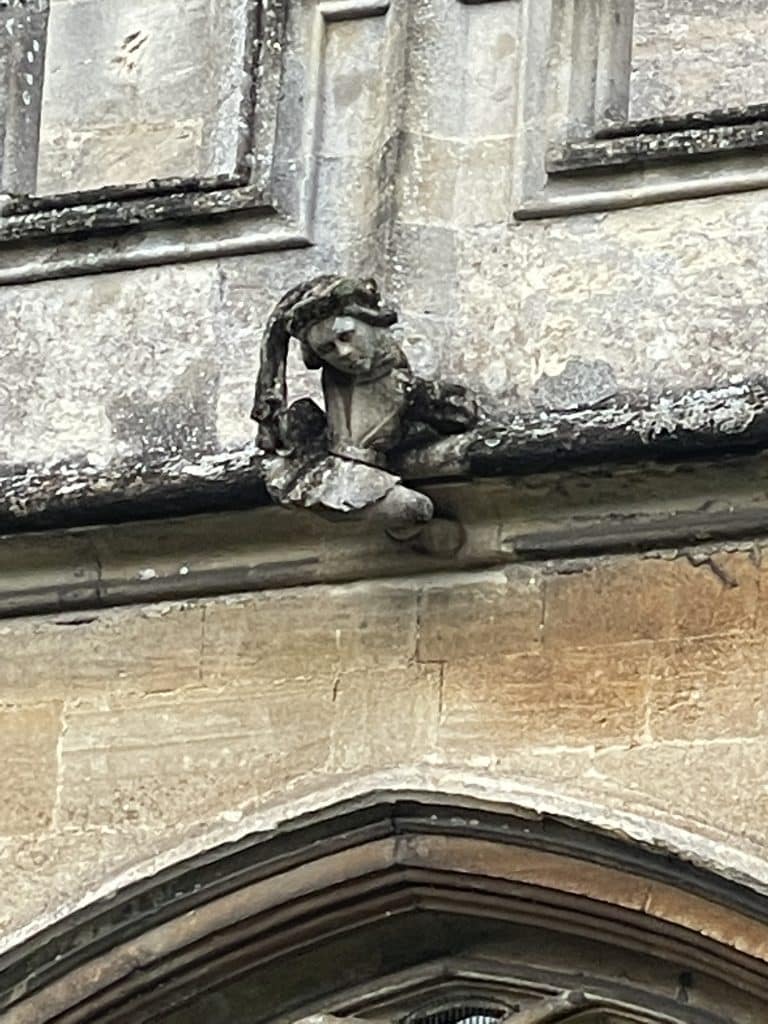
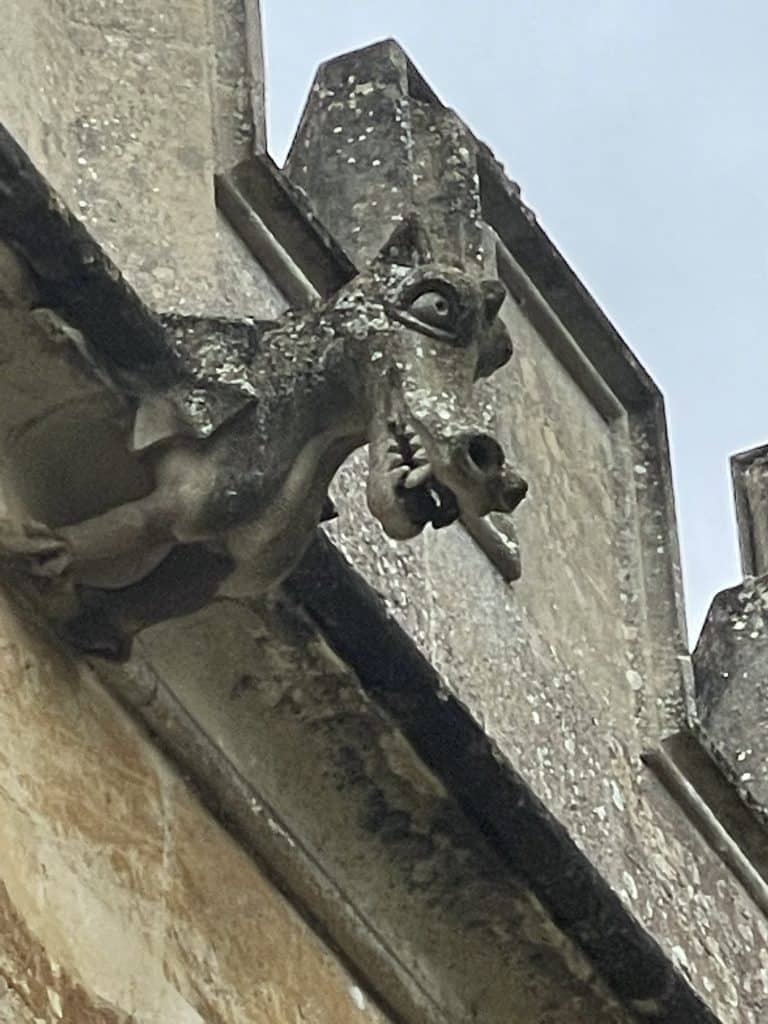
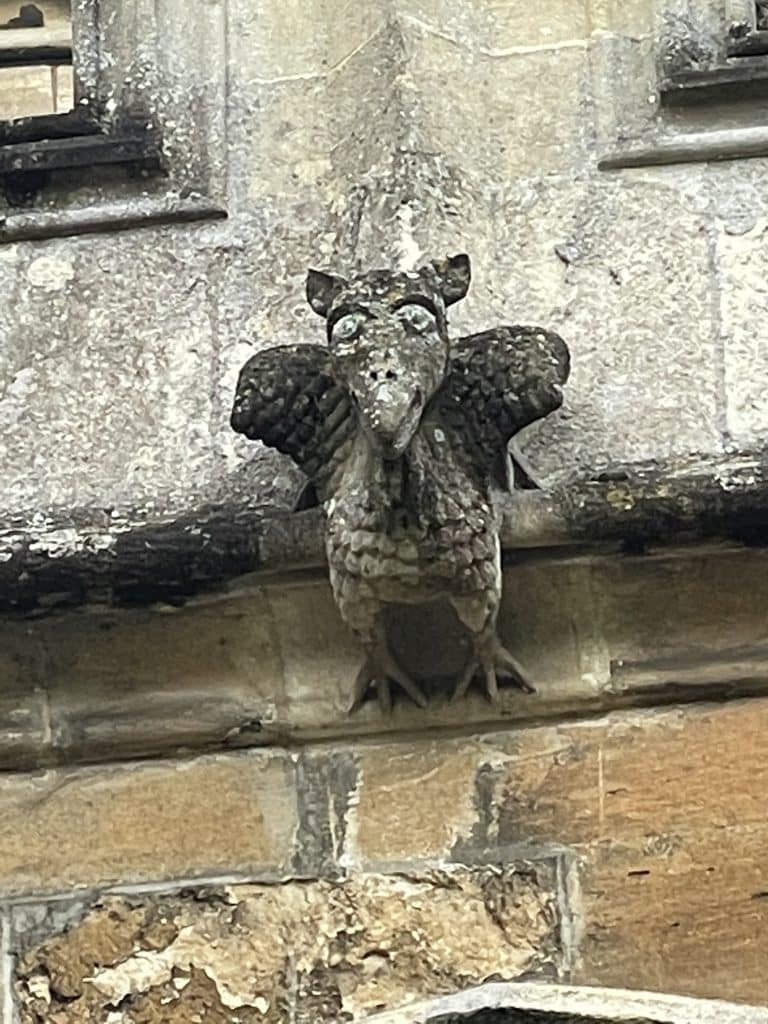
The outside of the church
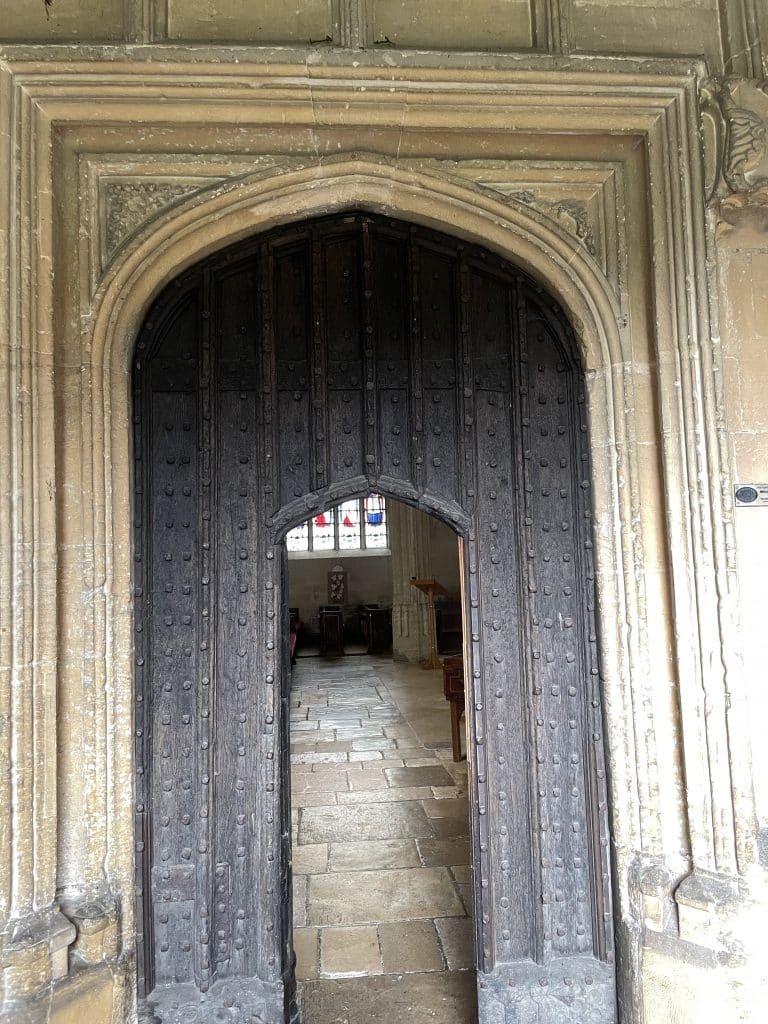
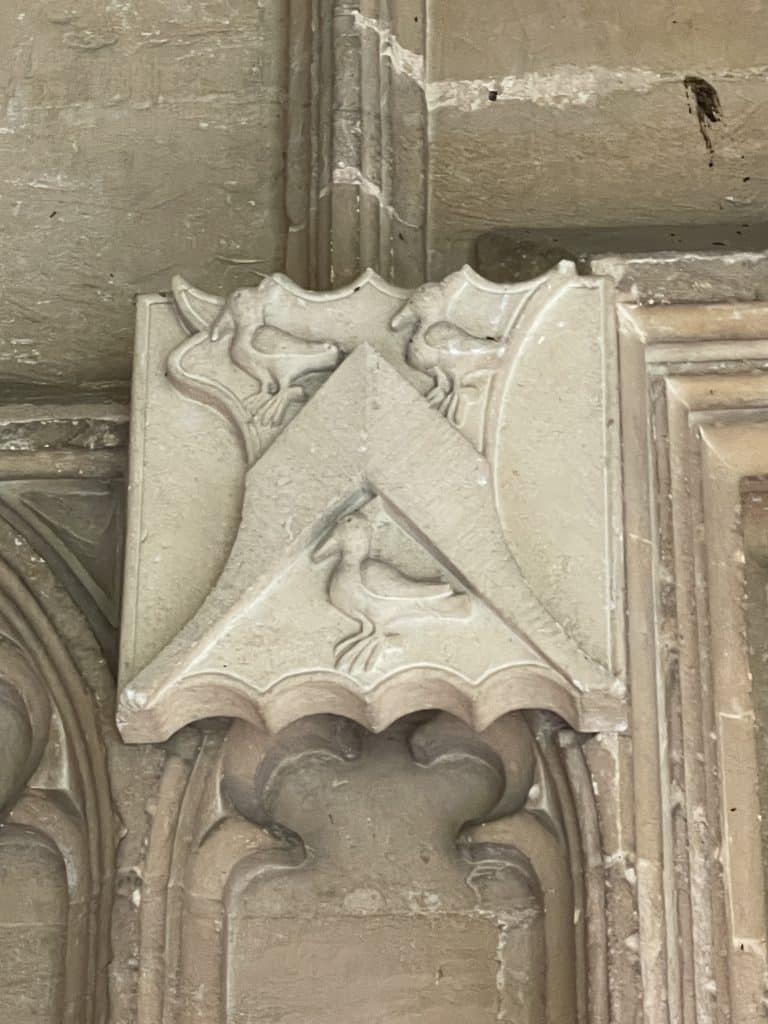
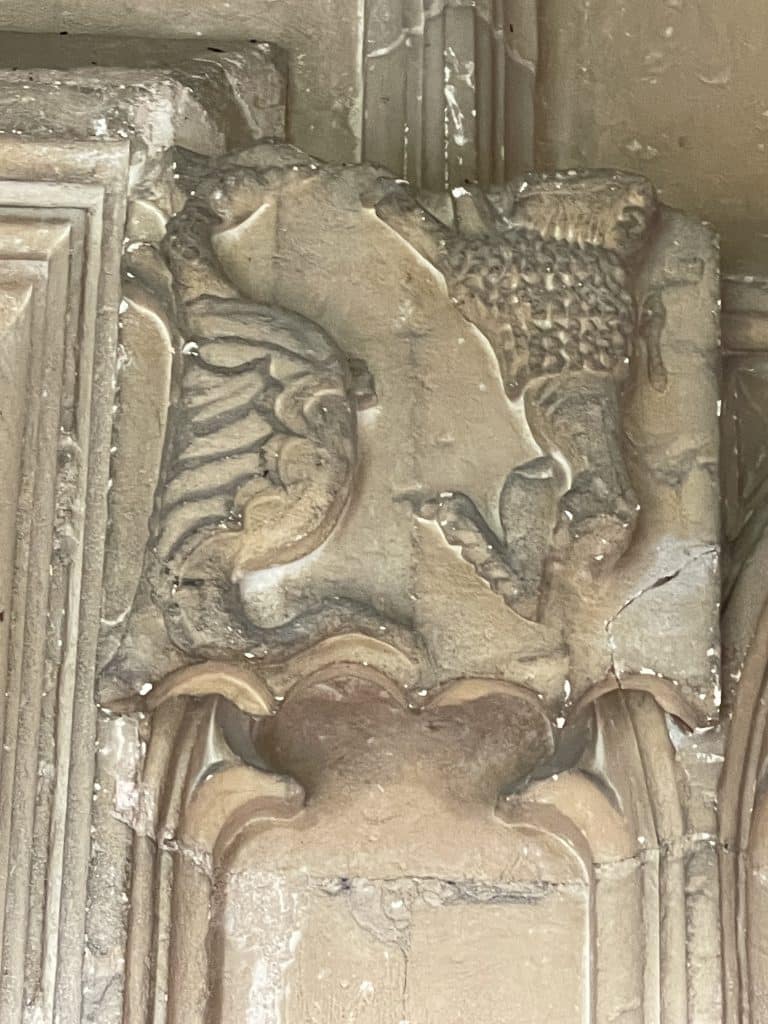
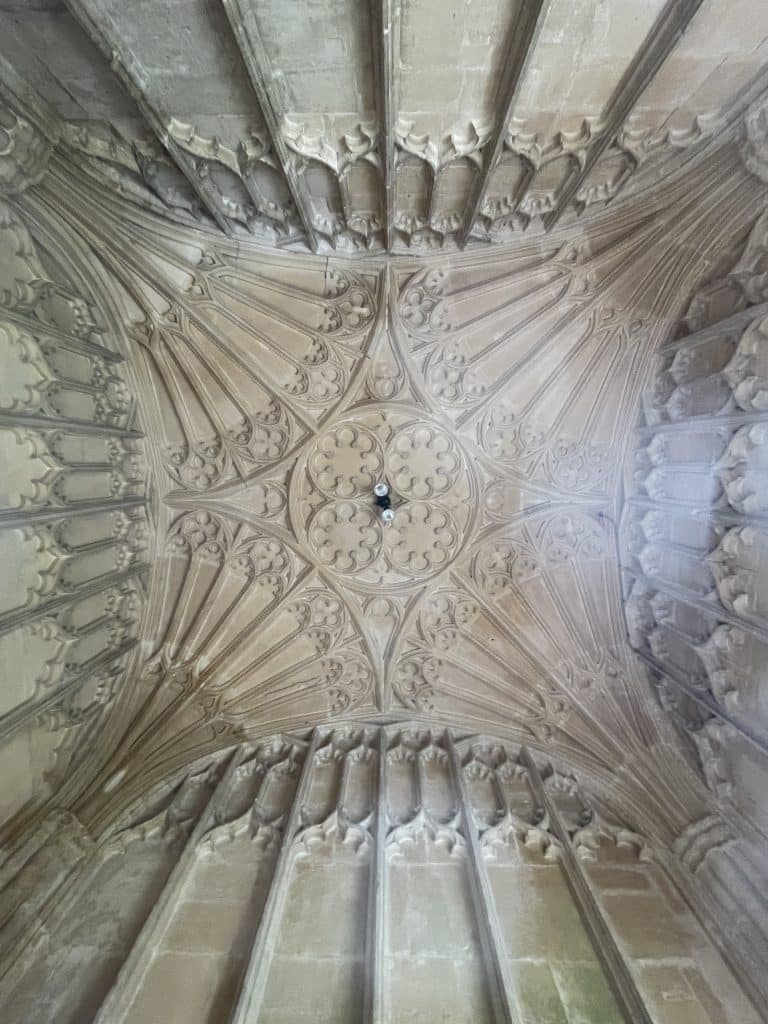
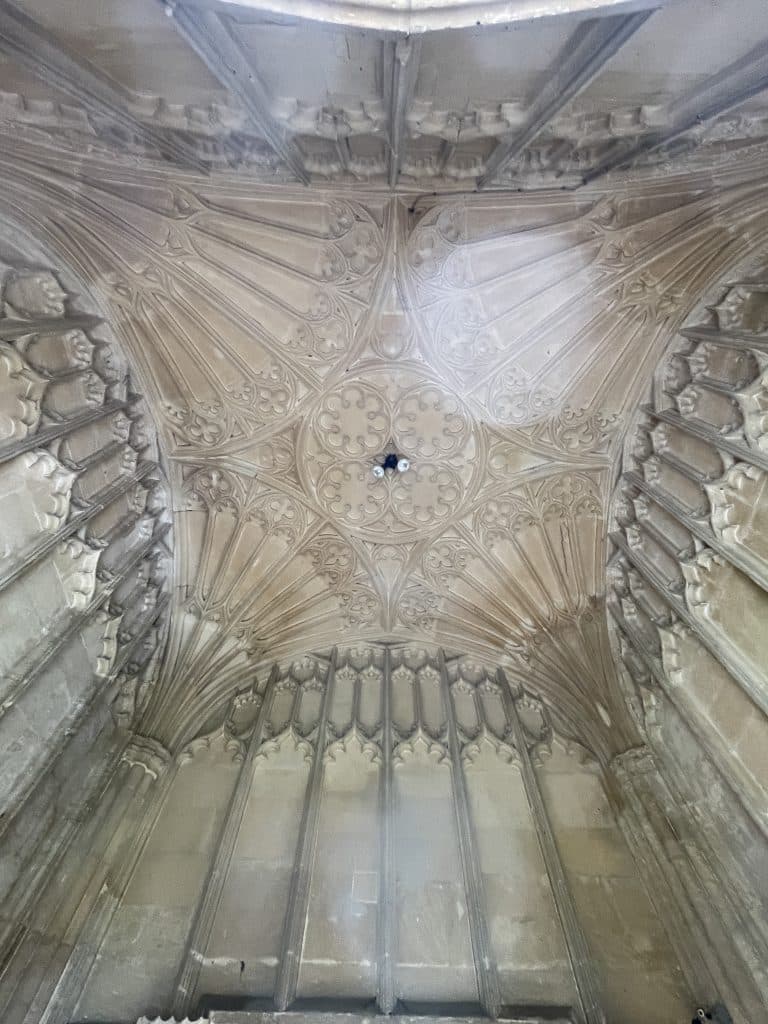
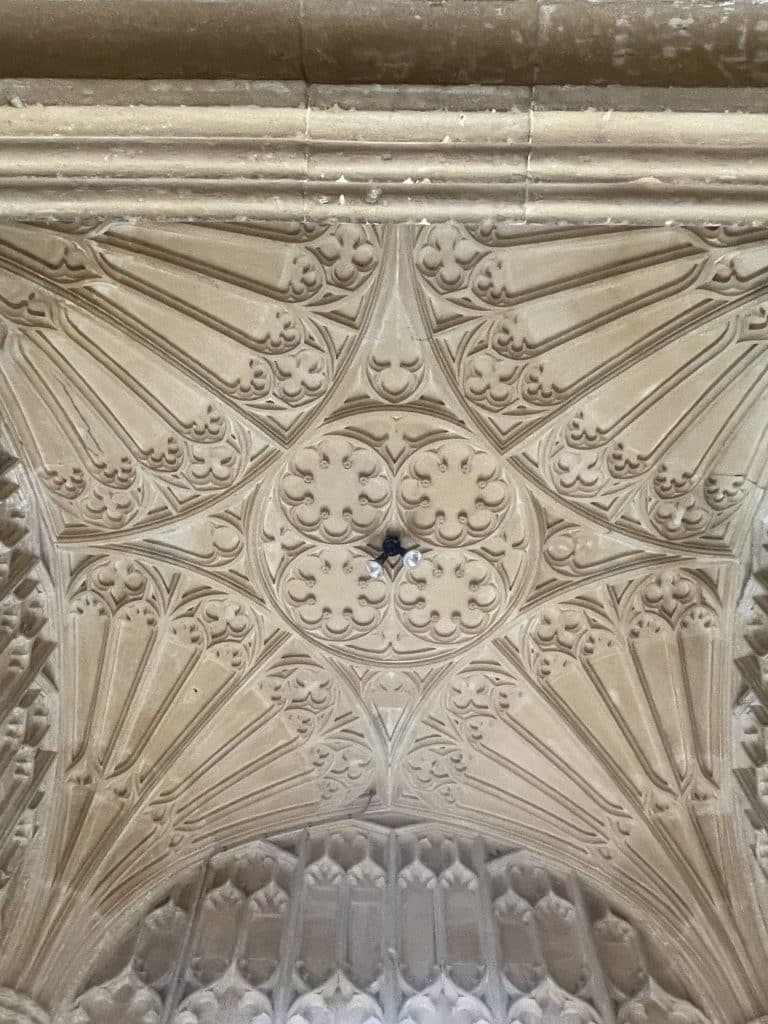
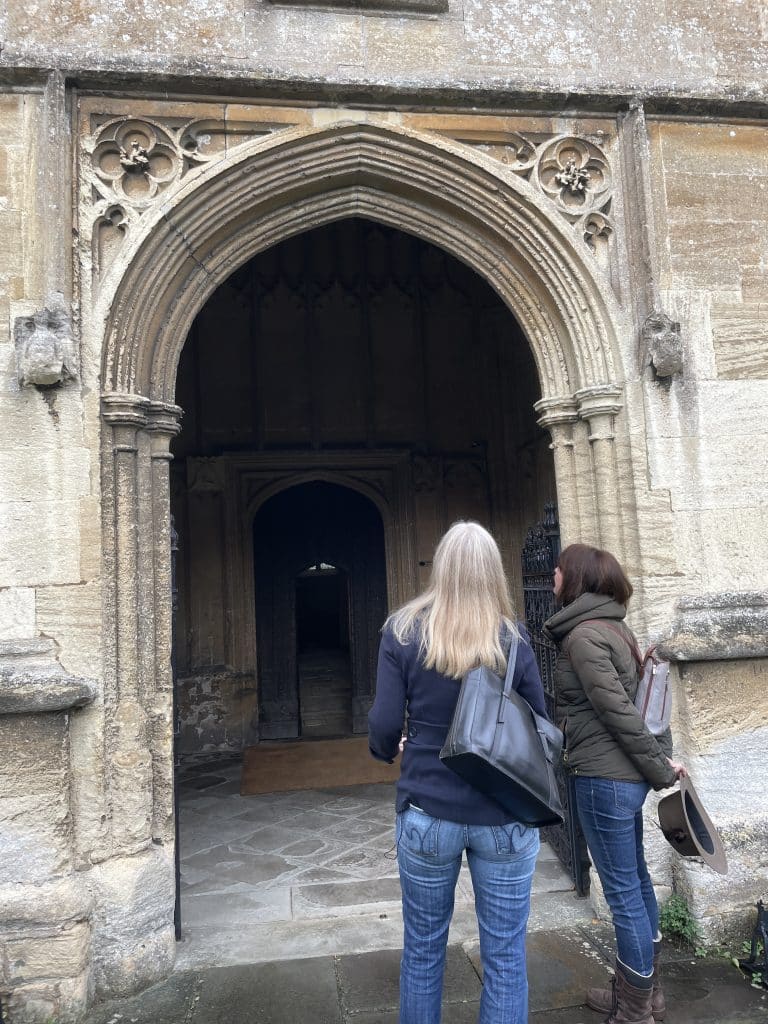
The door to the church, with a coat of arms and fan-vaulted ceiling inside the porch
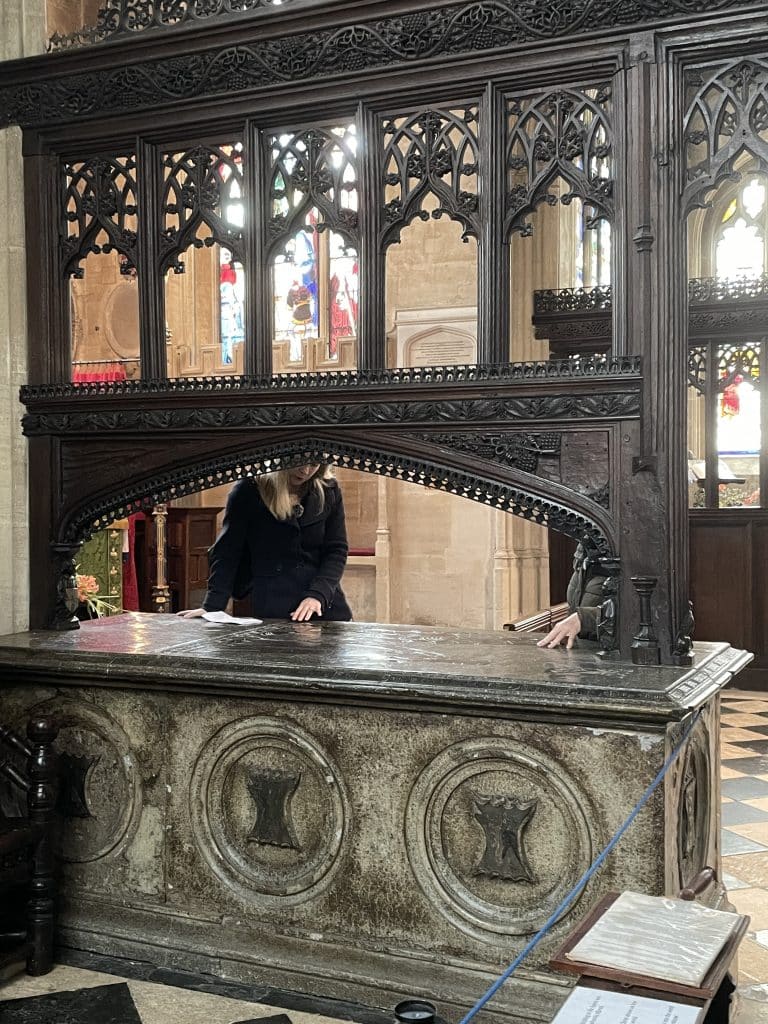
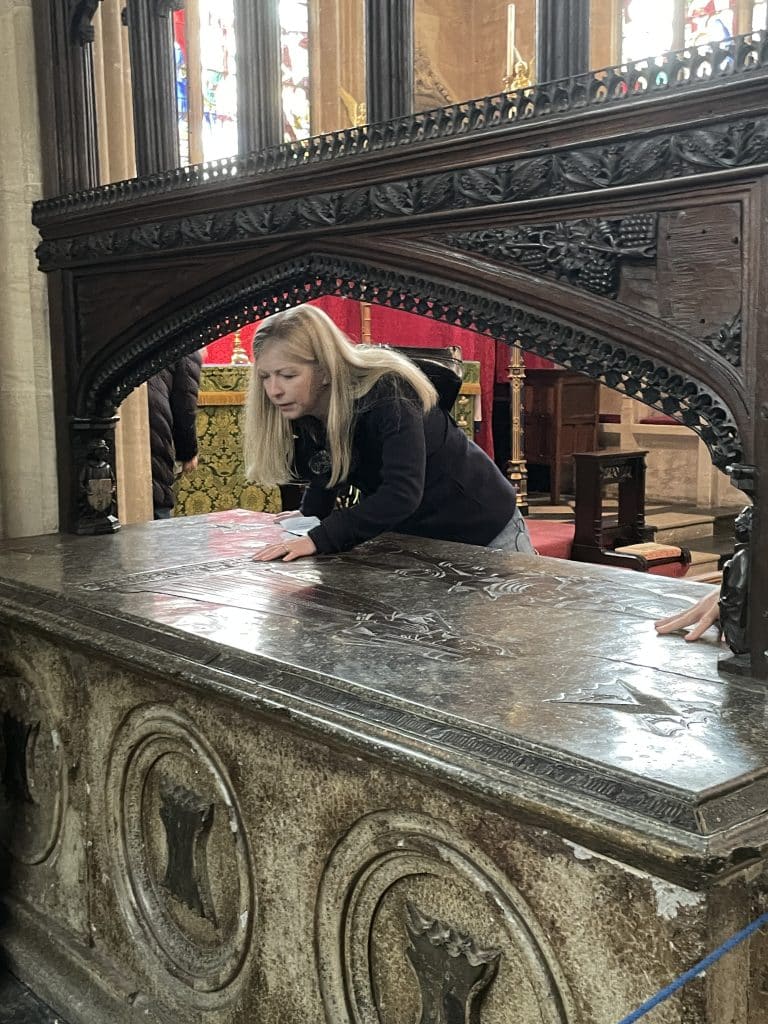
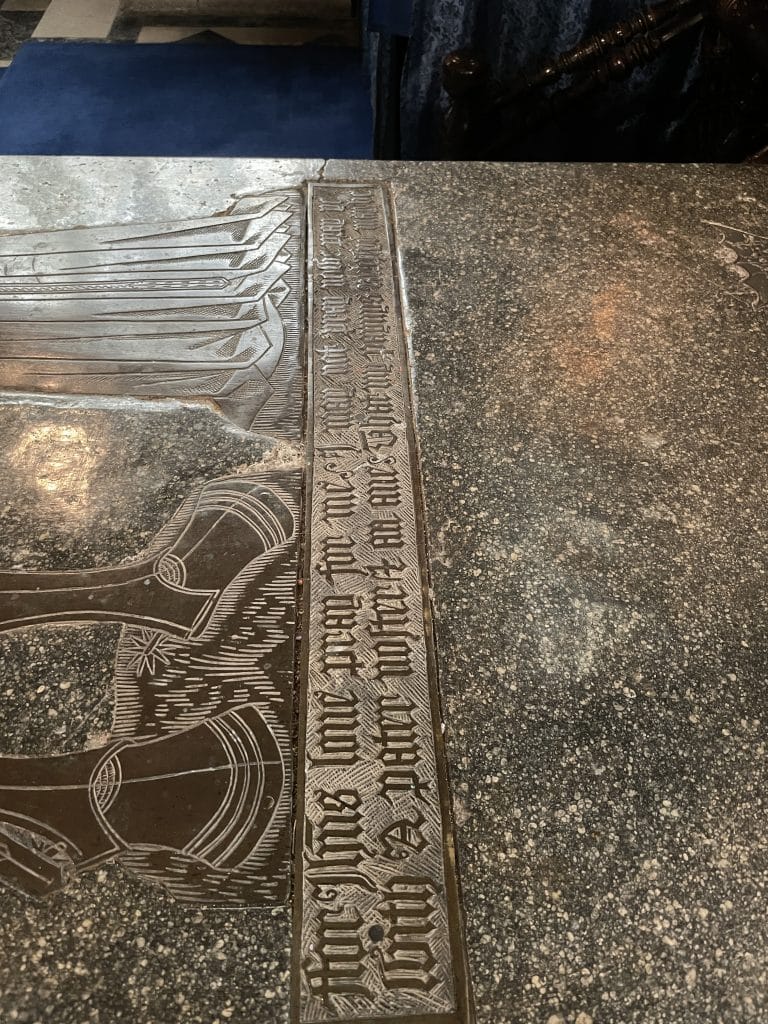
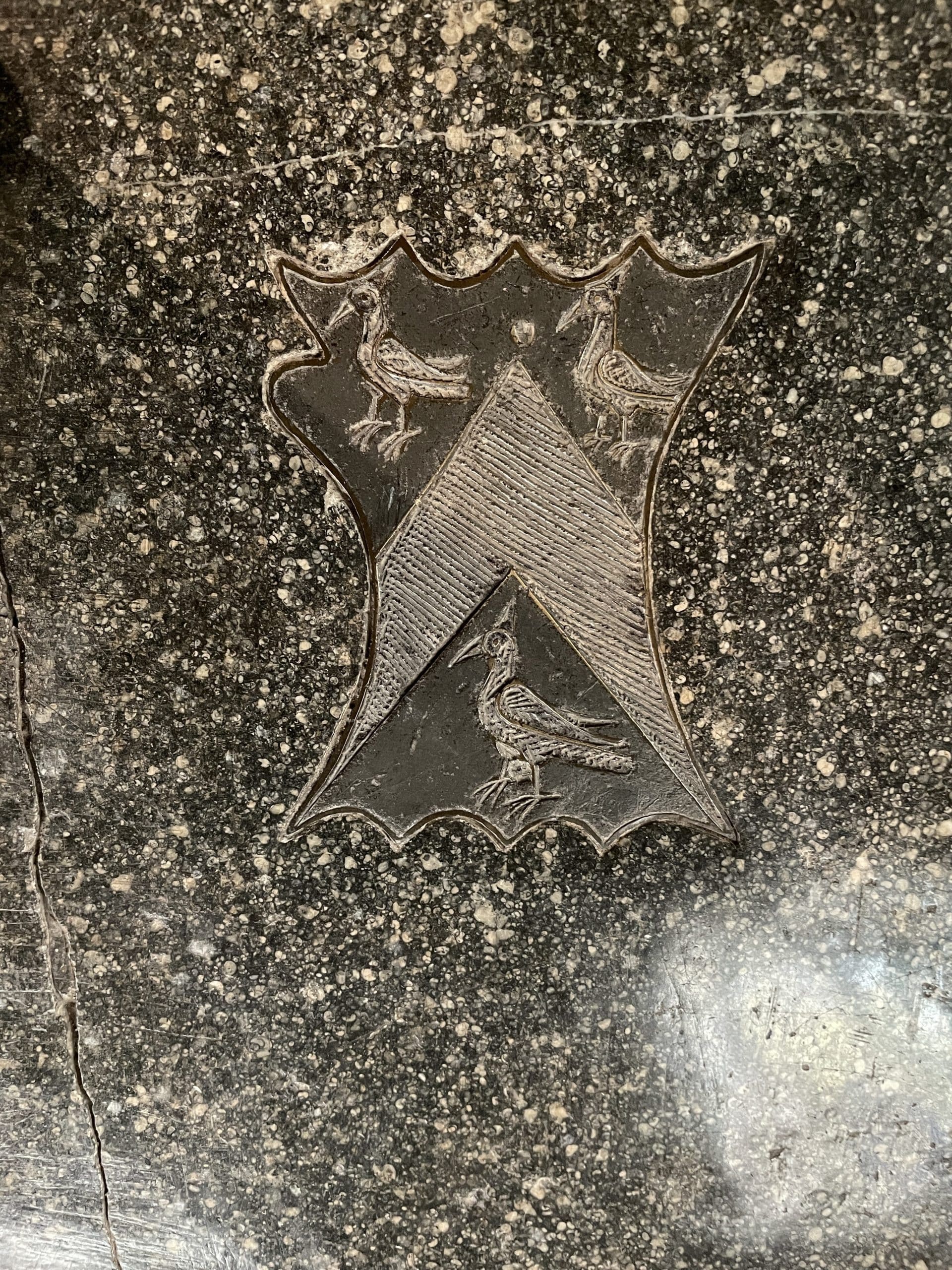
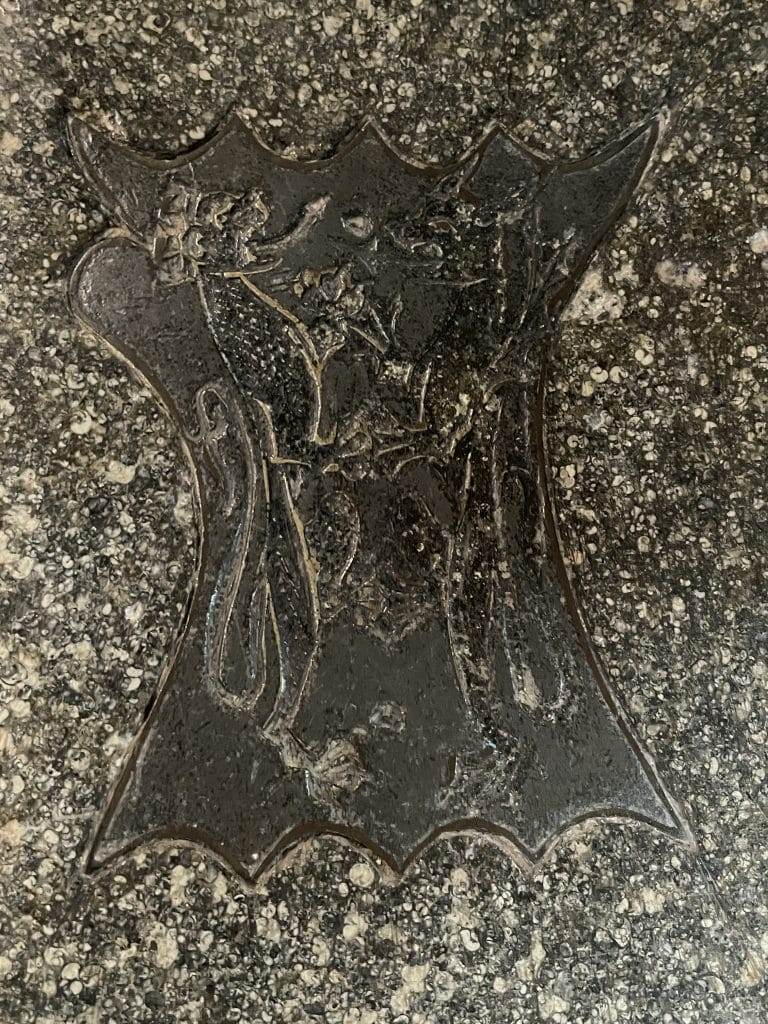
John Tame’s tomb with his identifying symbol and family coat of arms
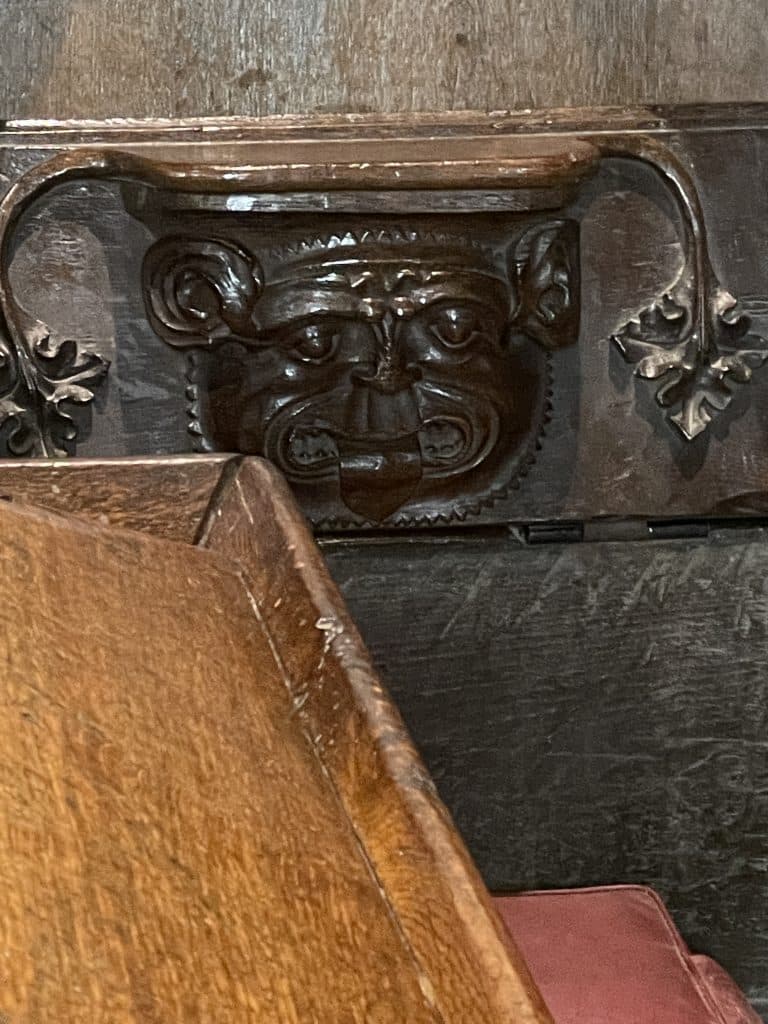
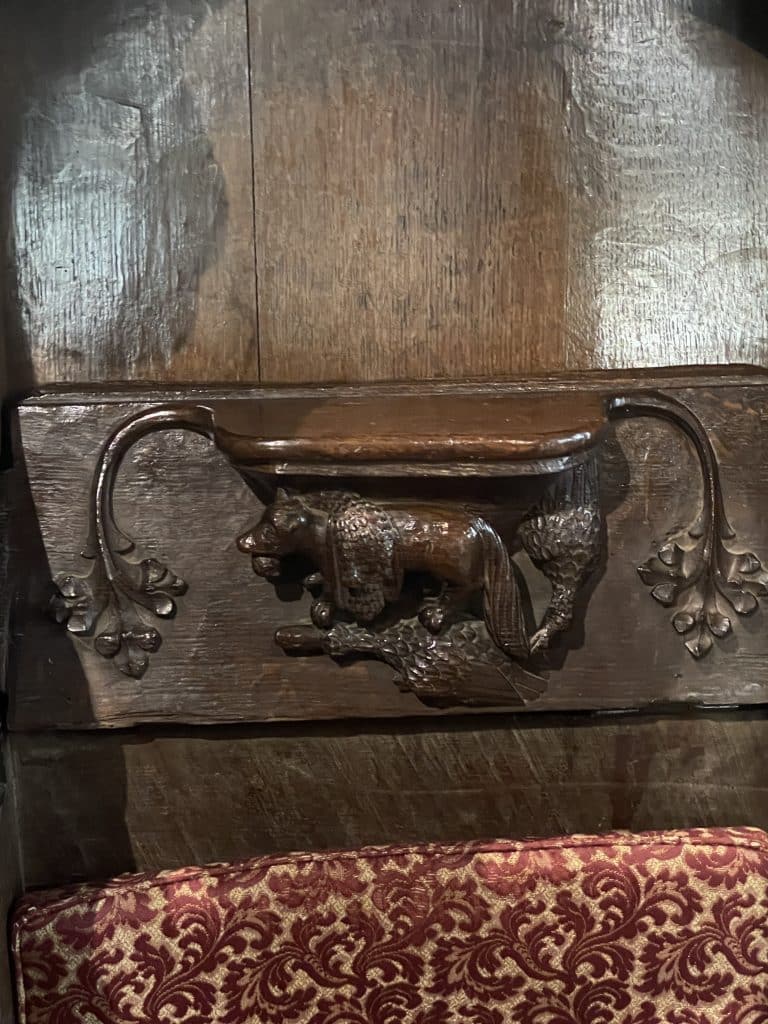
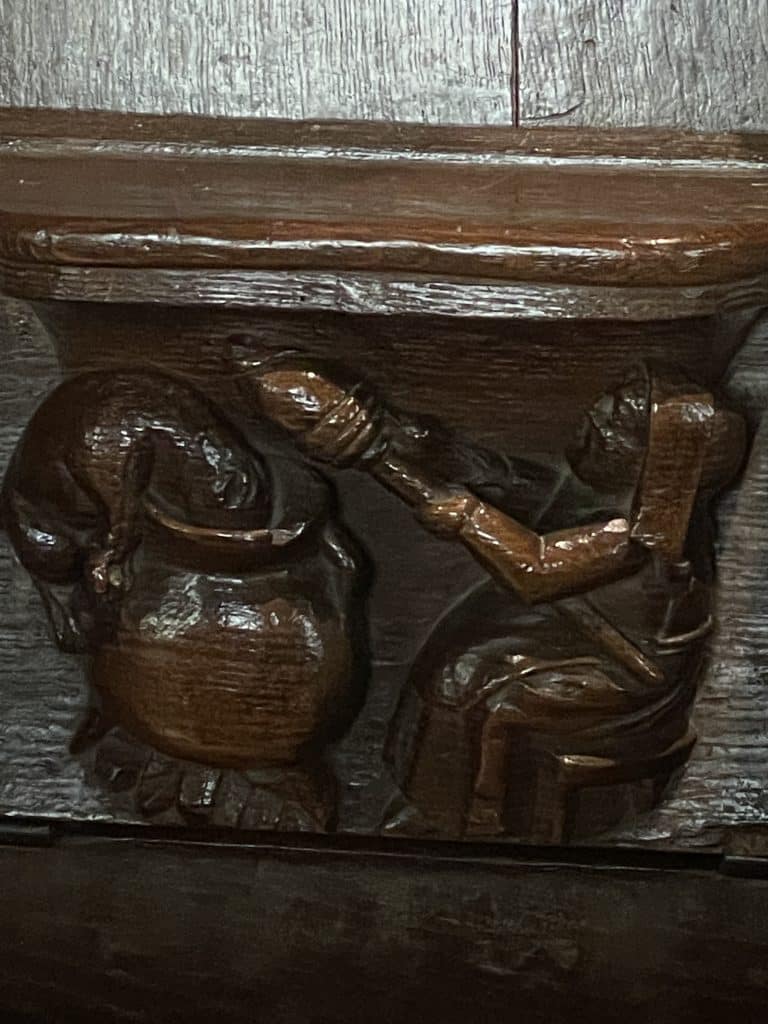
Misericord with fifteenth century carving and vine motif
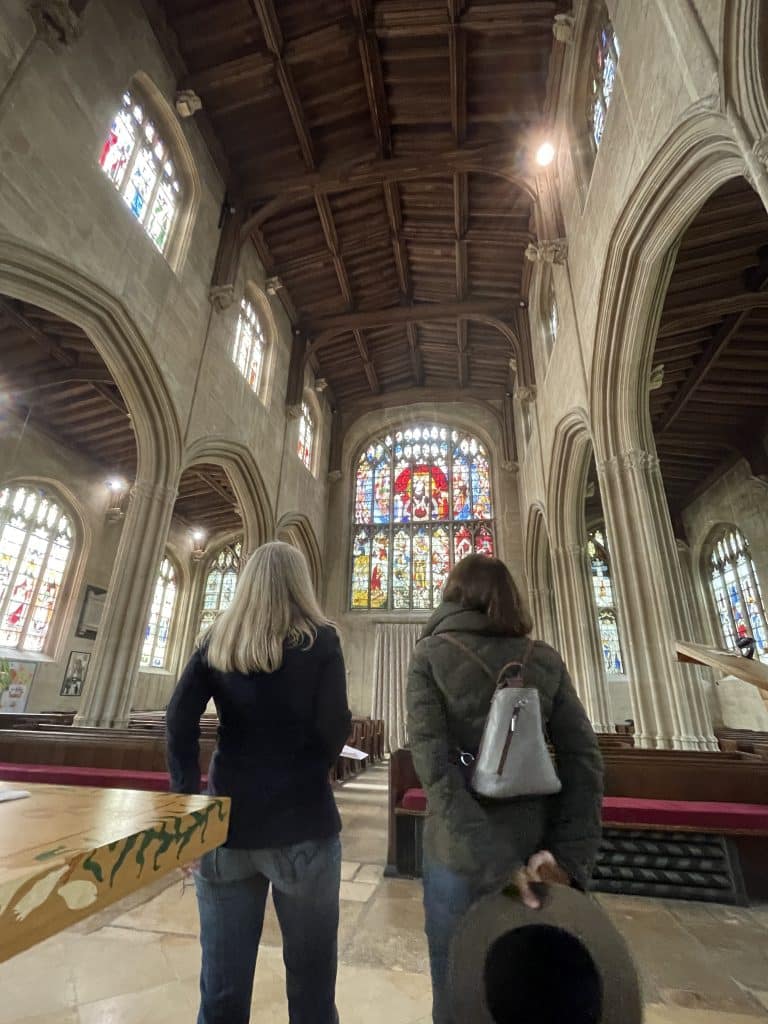
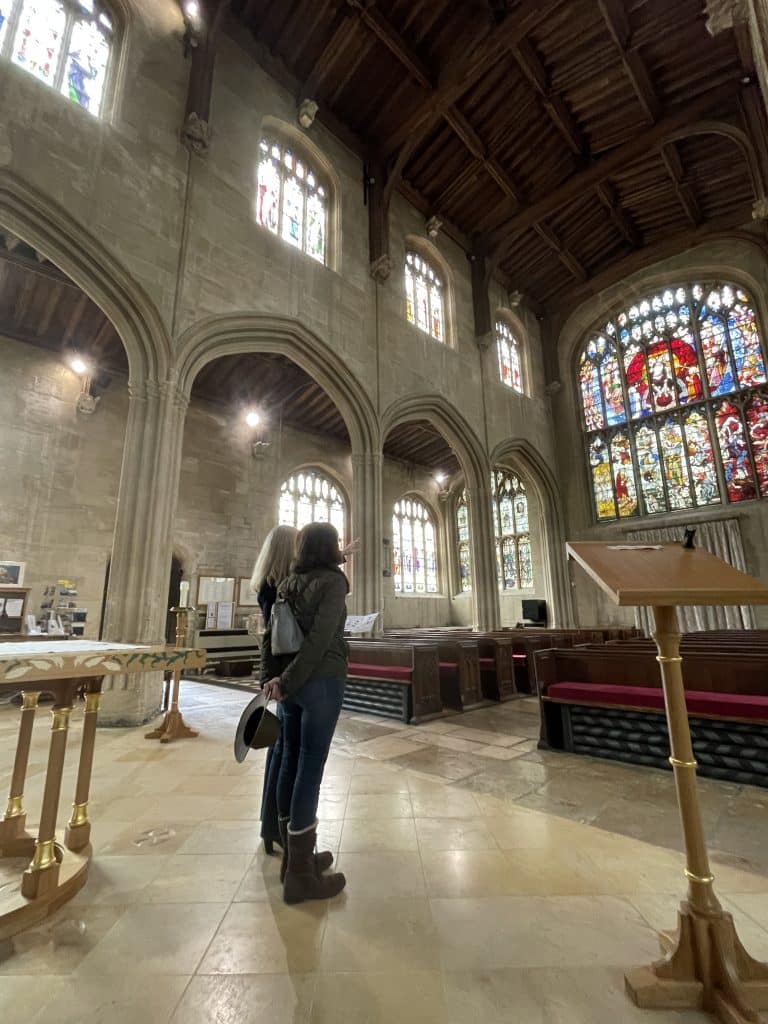
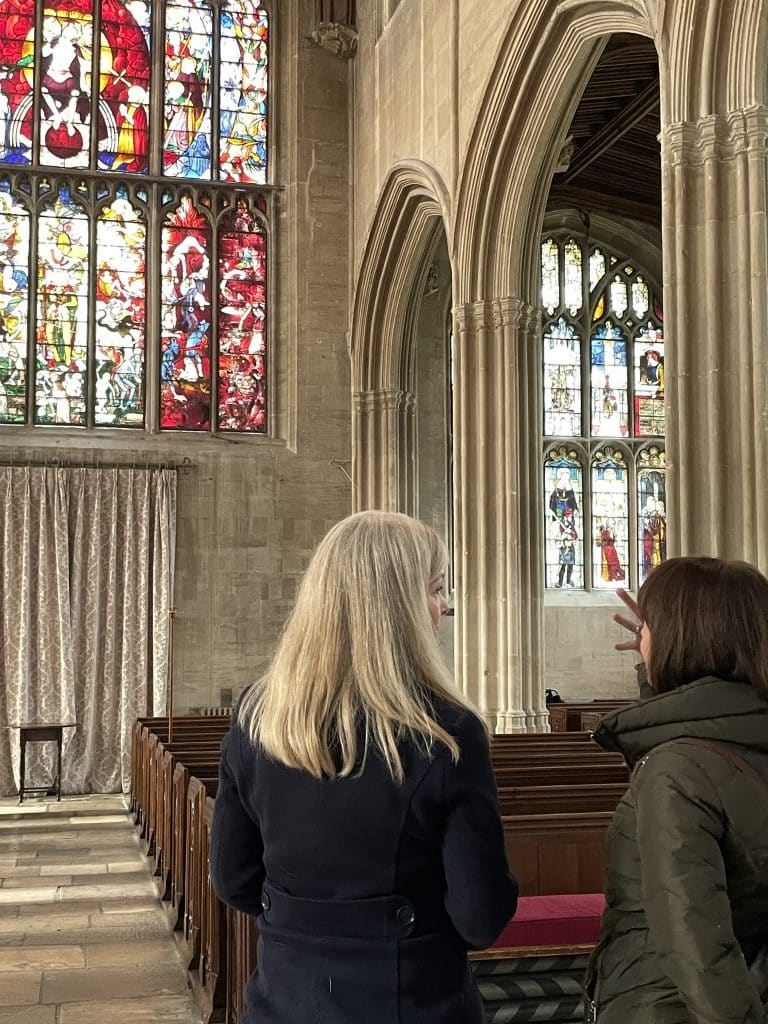
Sarah and Sam looking towards the Great West window.
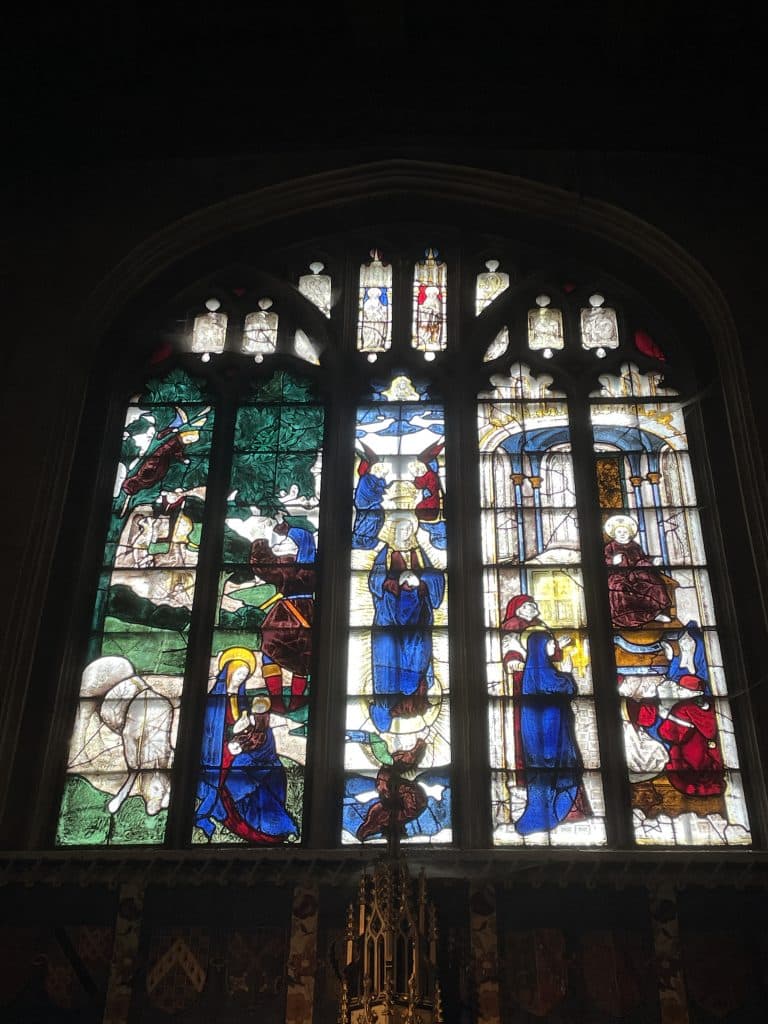
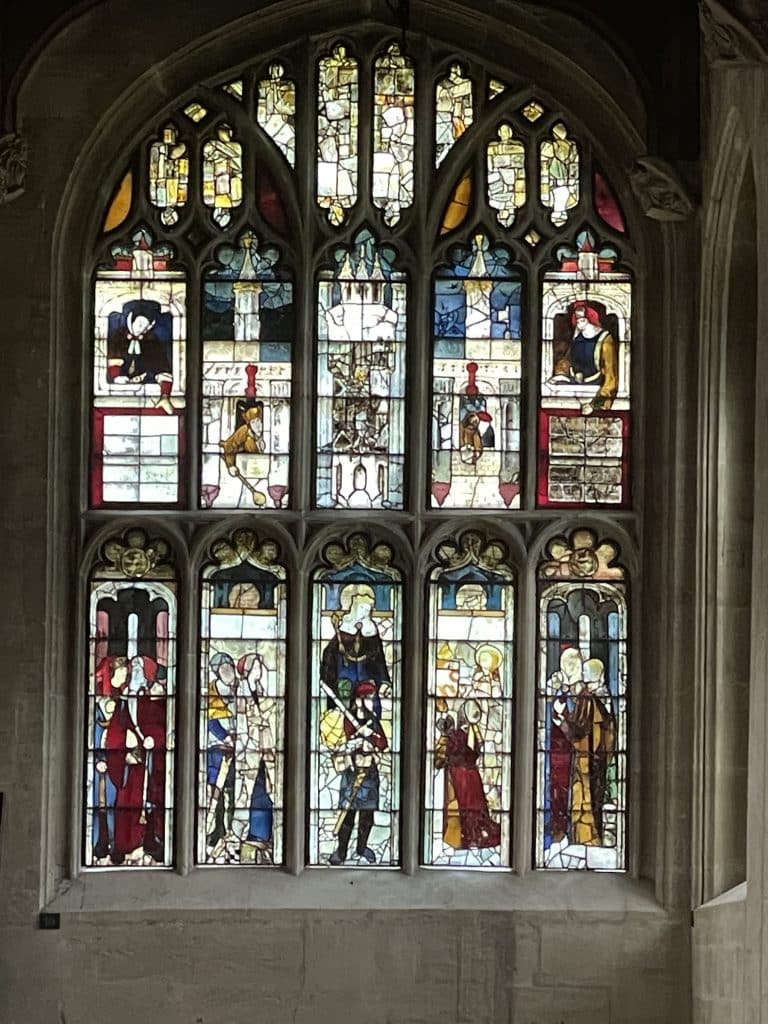
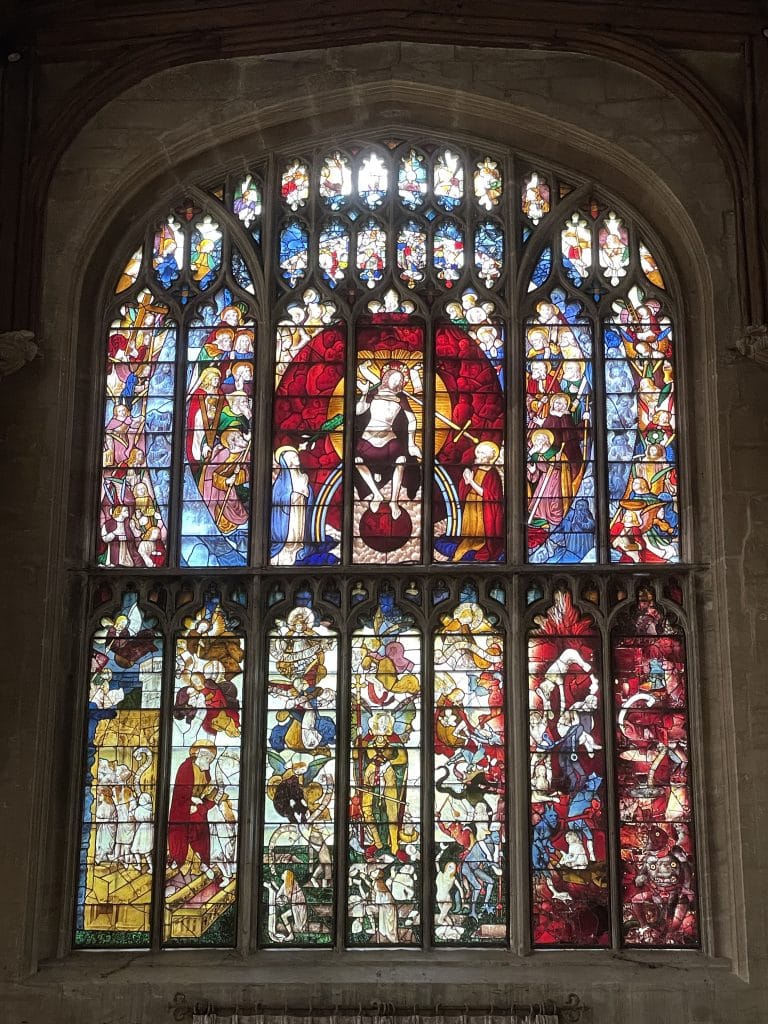
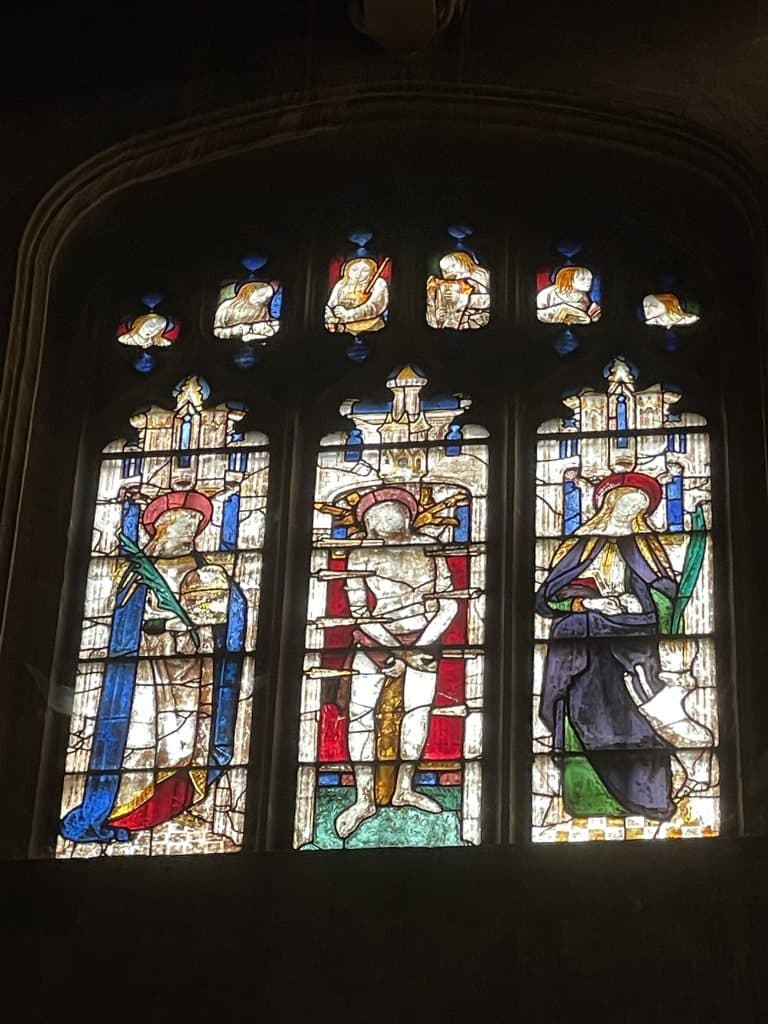
The Tudor Stained glass windows of Fairford Church, installed around the turn of the sixteenth century
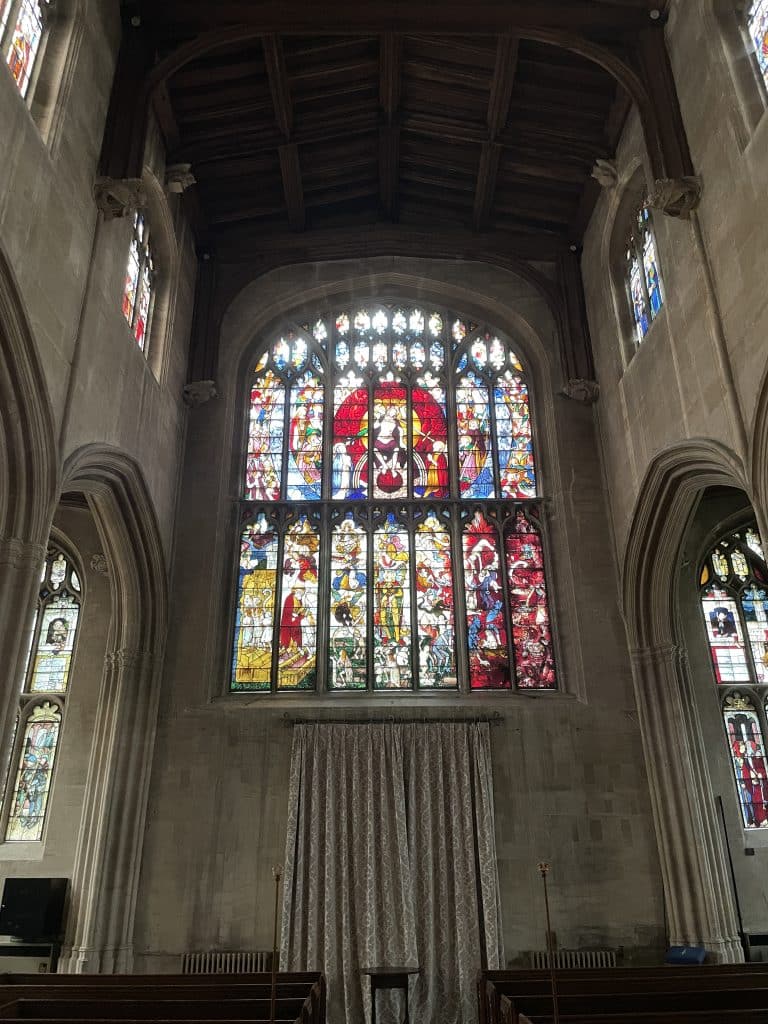
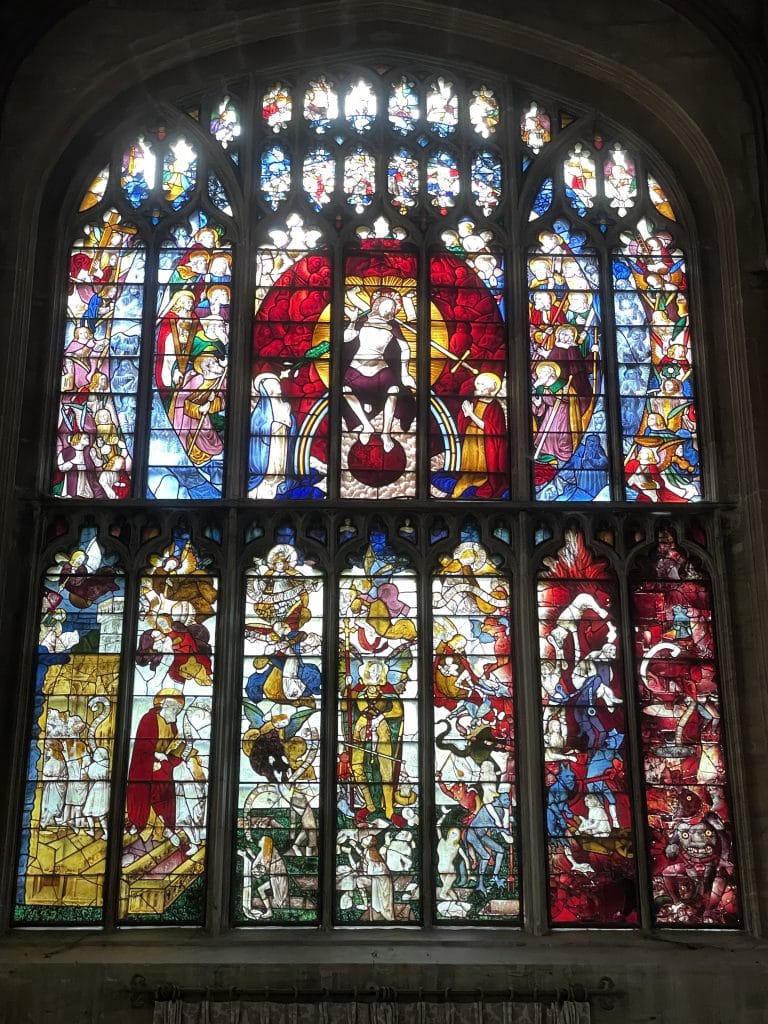
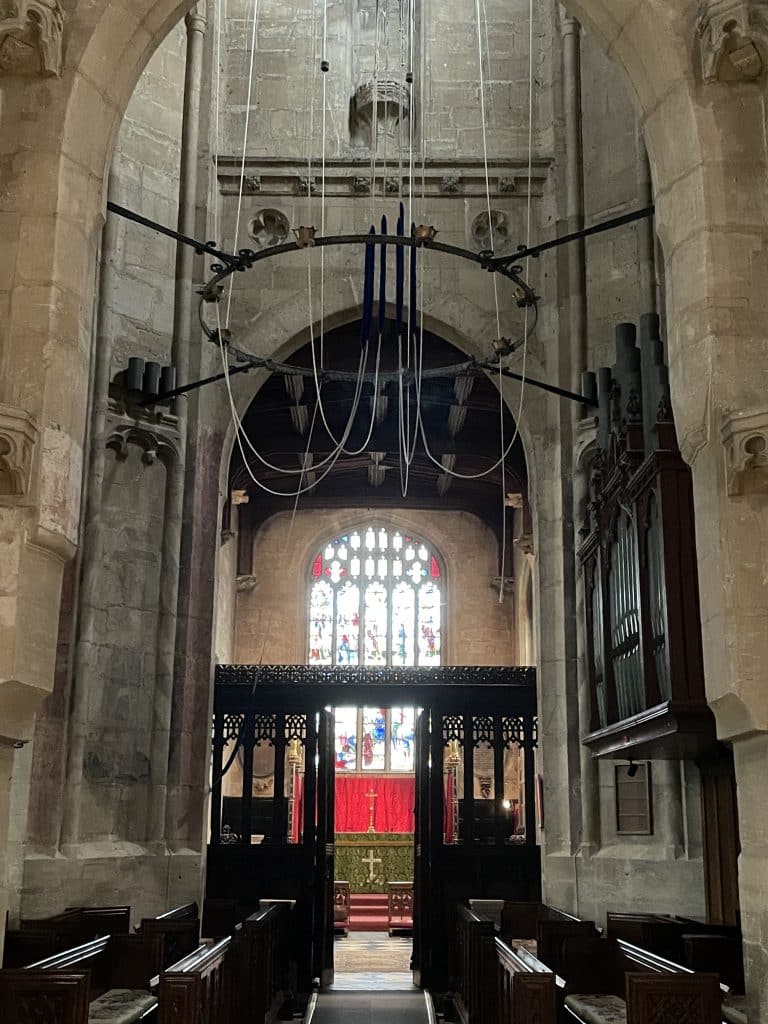
The Great West window
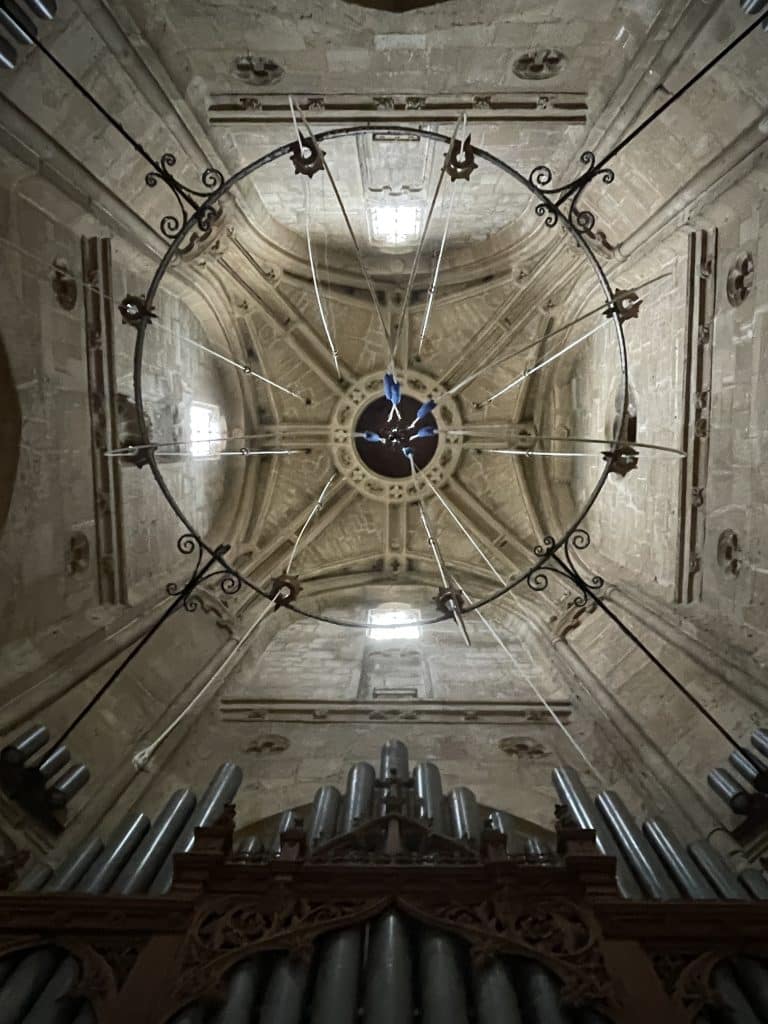
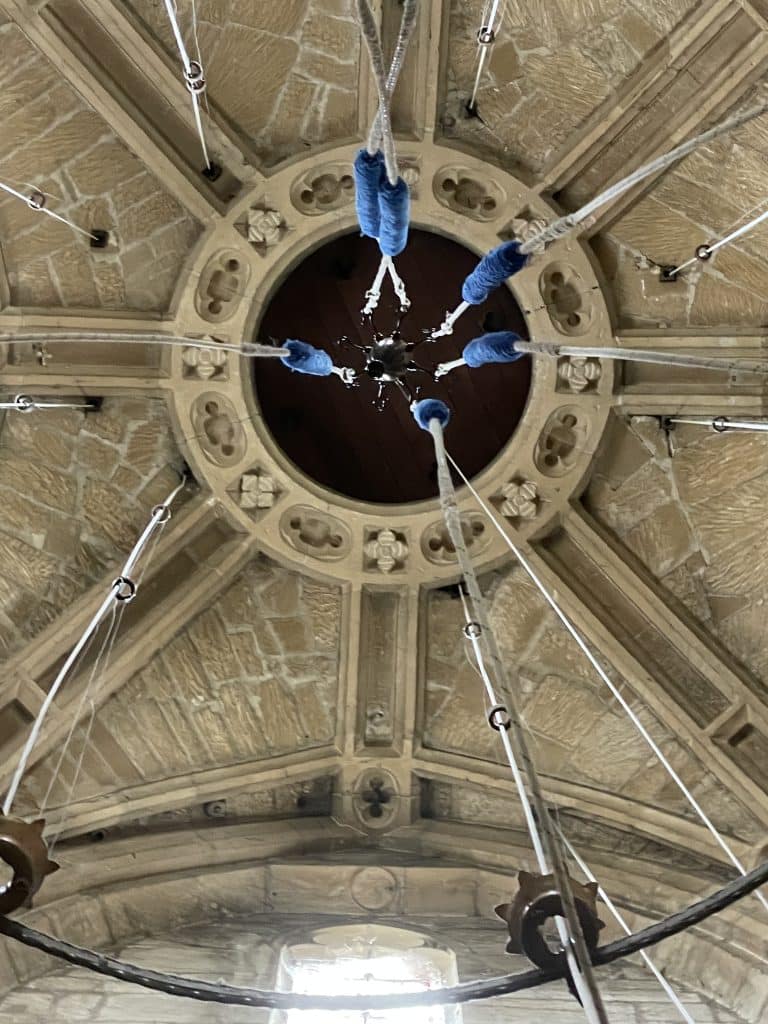
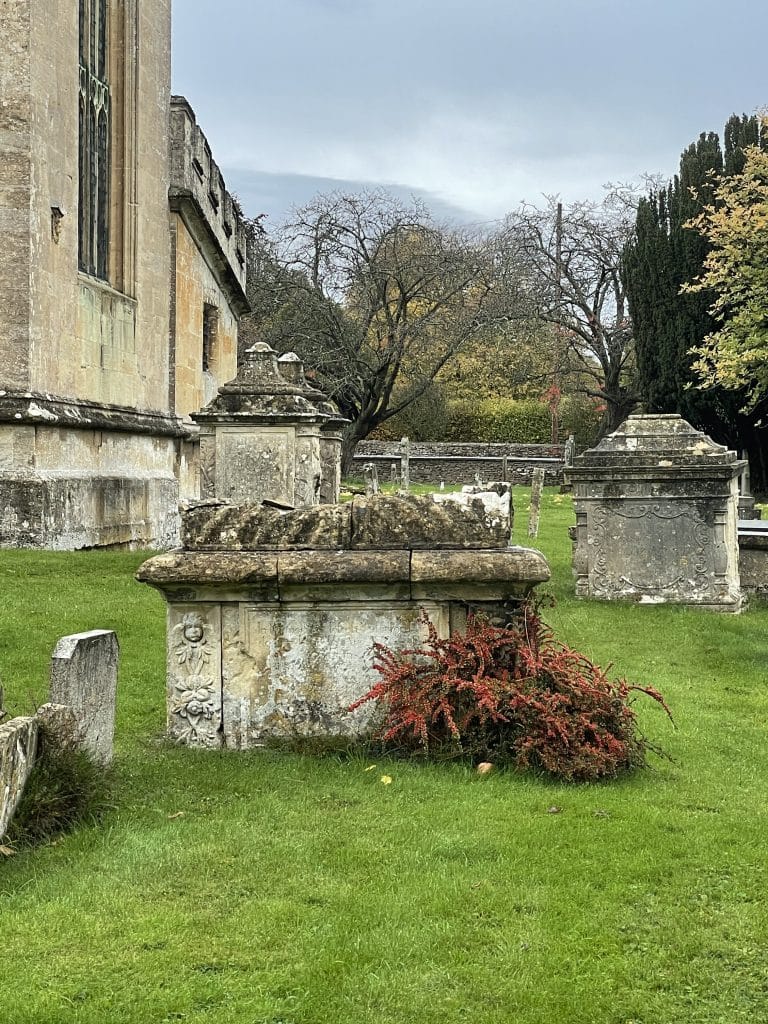
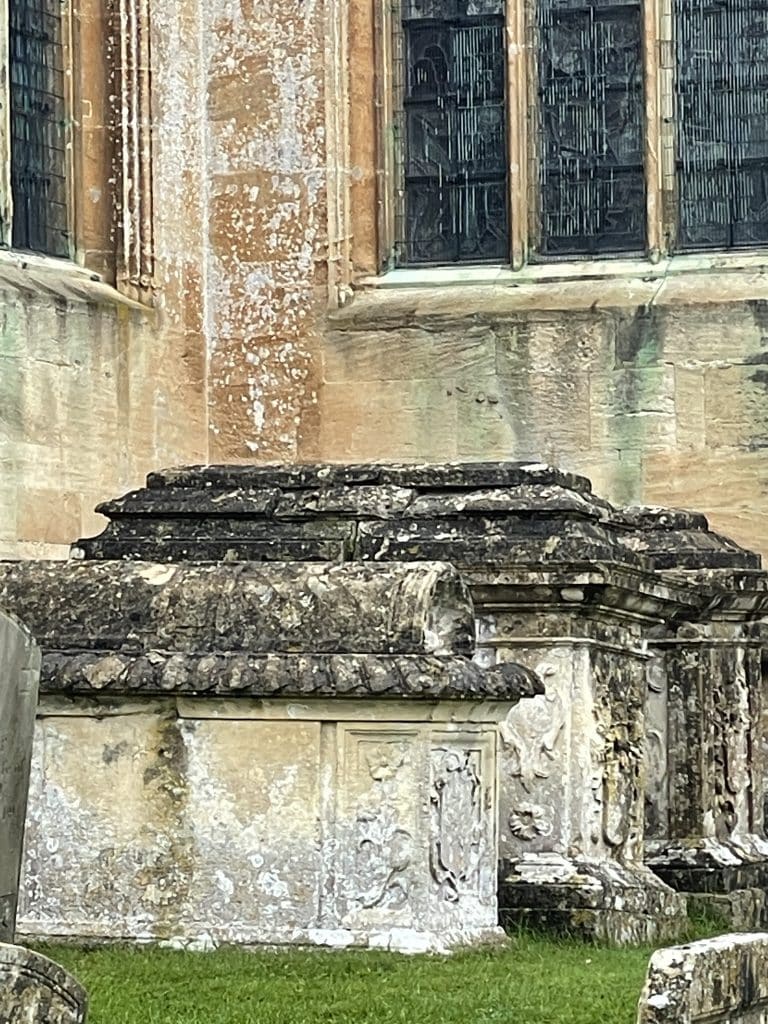
Graveyard
Useful Links
- To book your place on our upcoming virtual summit: Your Essential Guide to Coronation: Unravelling The Mystique Of Monarchy, click here. (Note: With ‘Road Trip Traveller’ level membership to The Ultimate Guide To Exploring Tudor England’, you do not need to purchase tickets as summit access is included in your membership).
- To discover more about Henry VII and Elizabeth of York’s 1502 progress, click here (available only to The Ultimate Guide Members). To join the wait list to become a member, click here.
- England’s Thousand Best Churches by Simon Jones

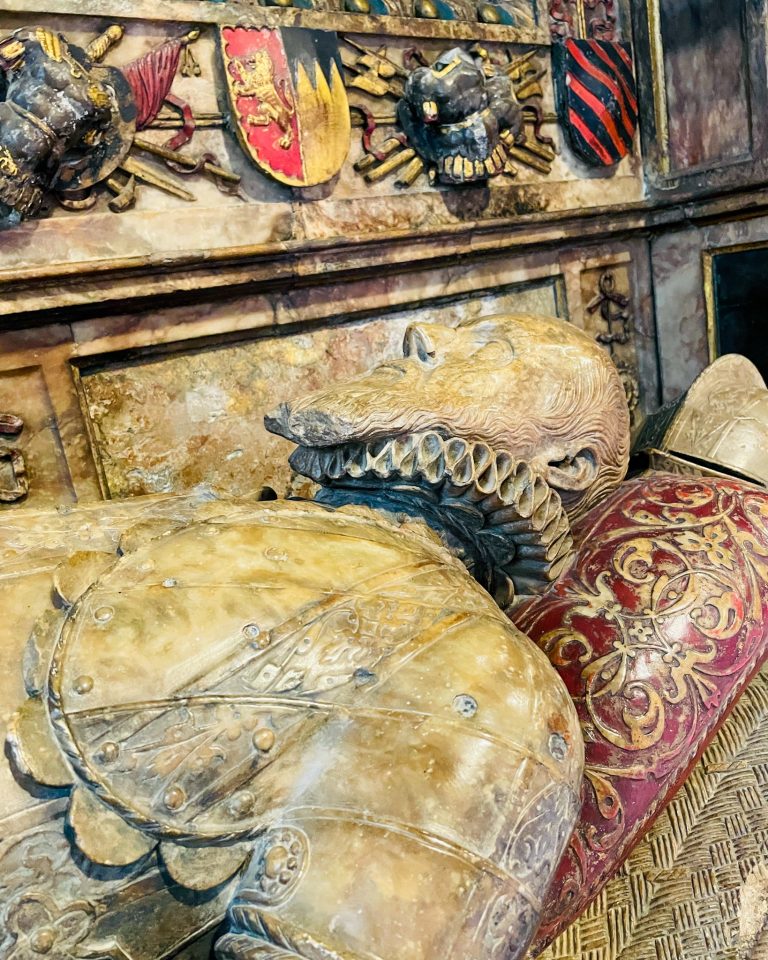
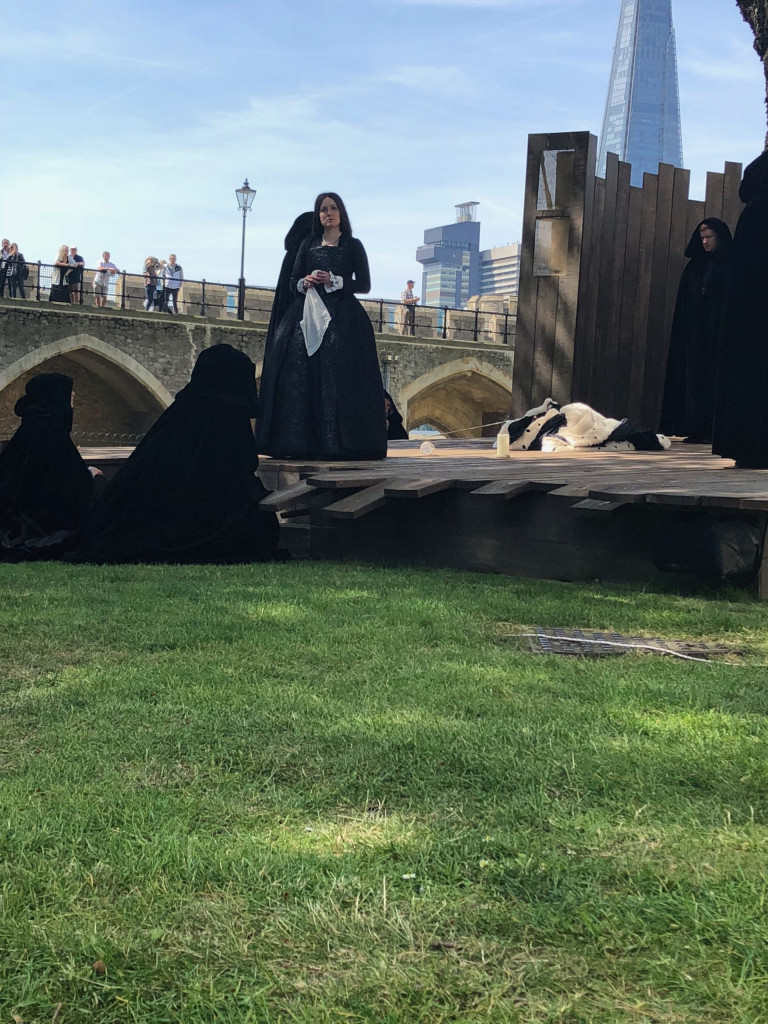
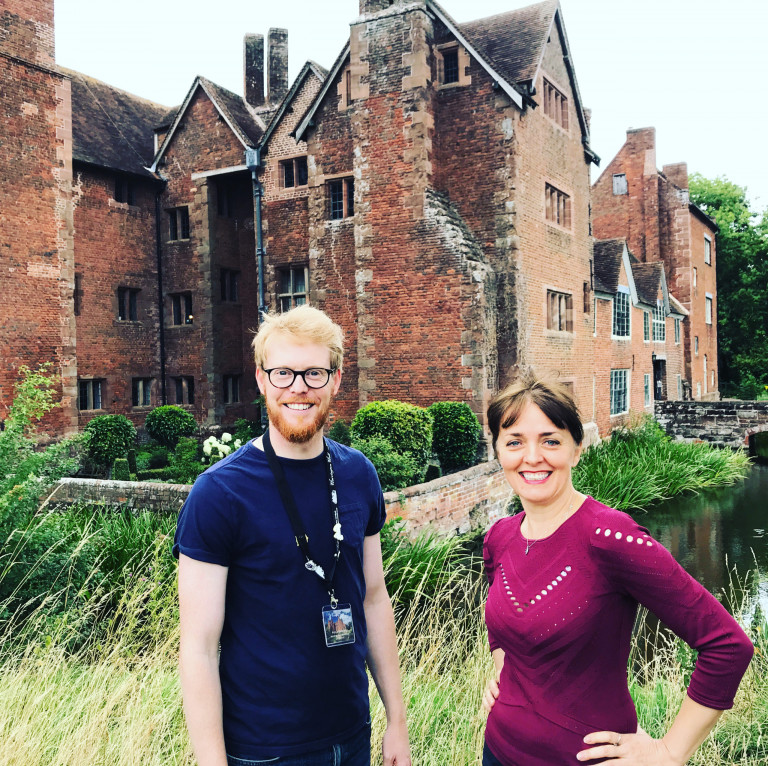
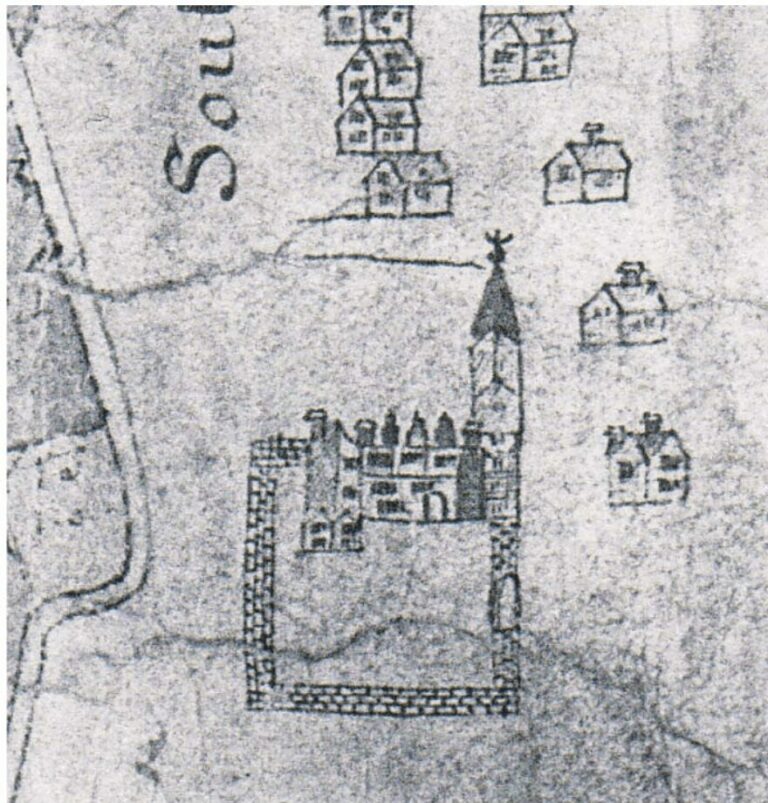
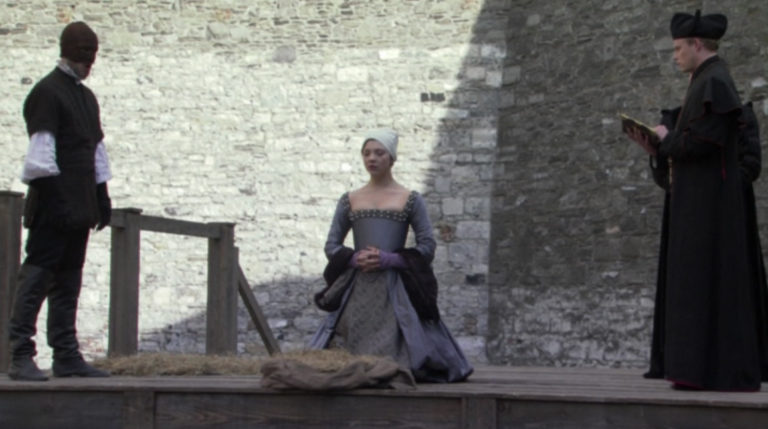
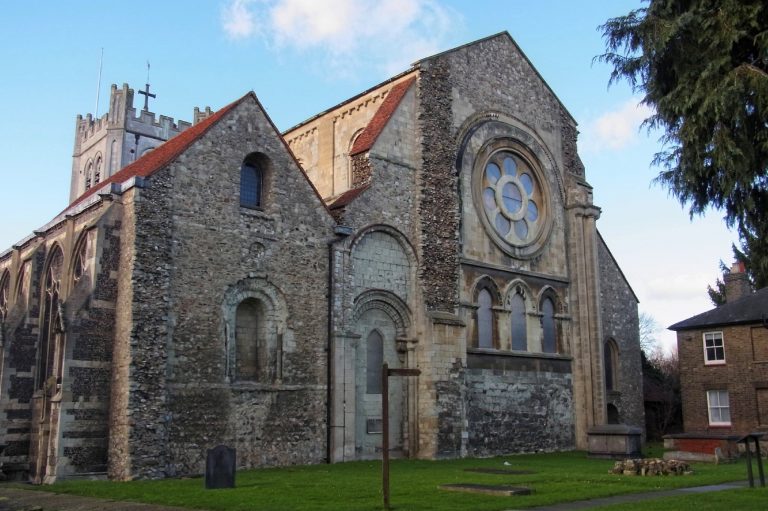
Wonderful podcast and overview of these two interesting churches!! And the photos really give a sense of the details that you and Samantha were looking at!